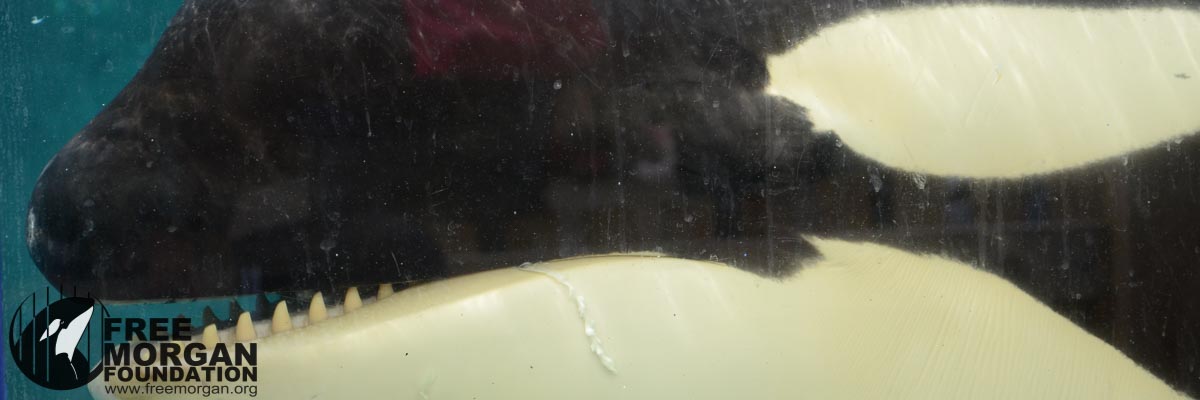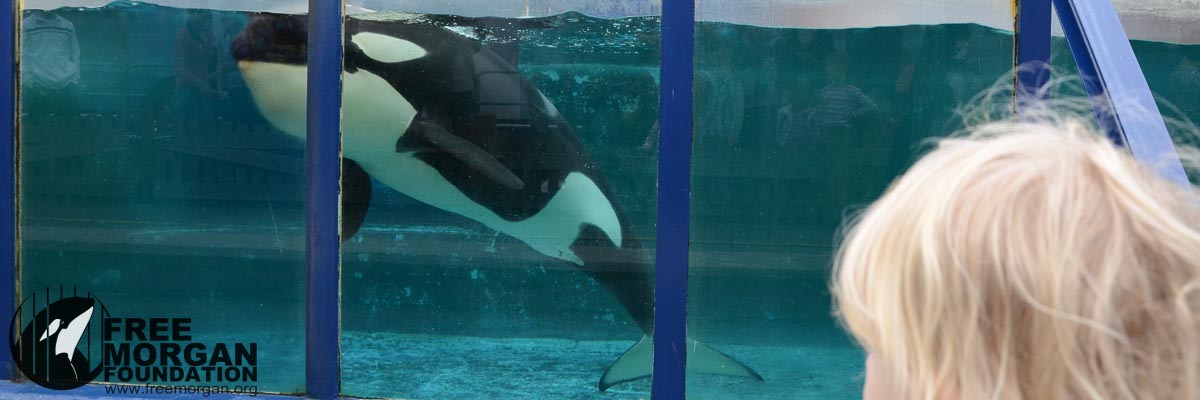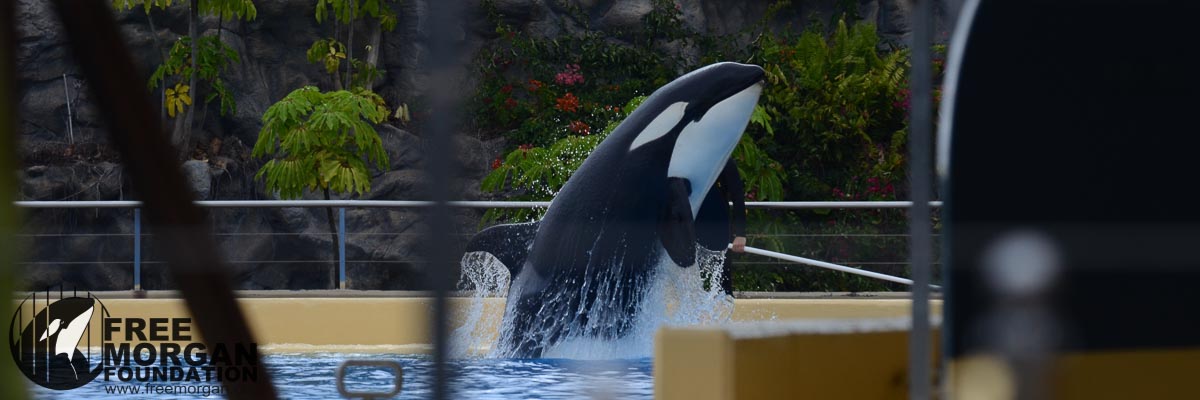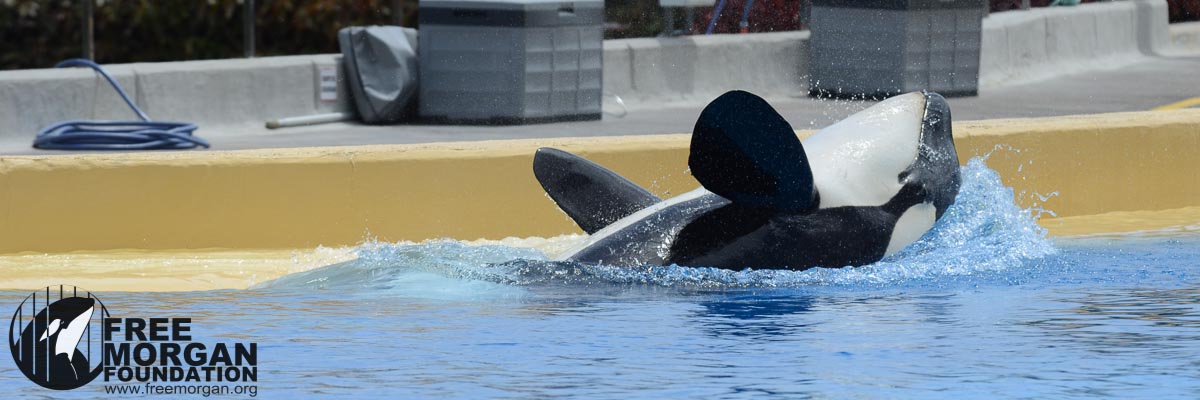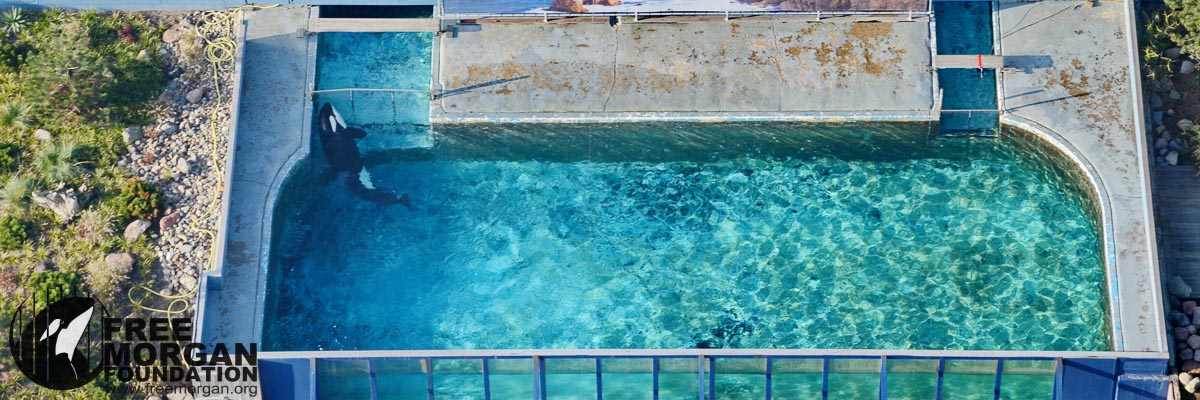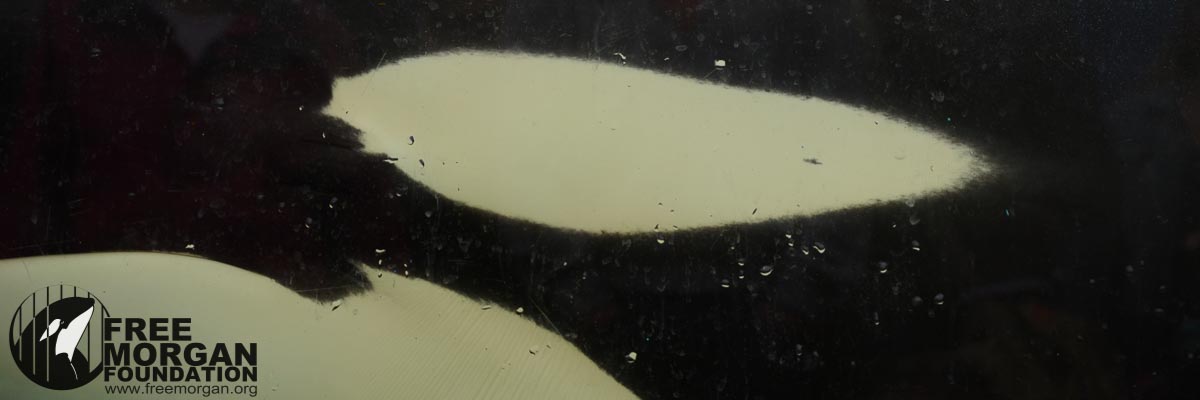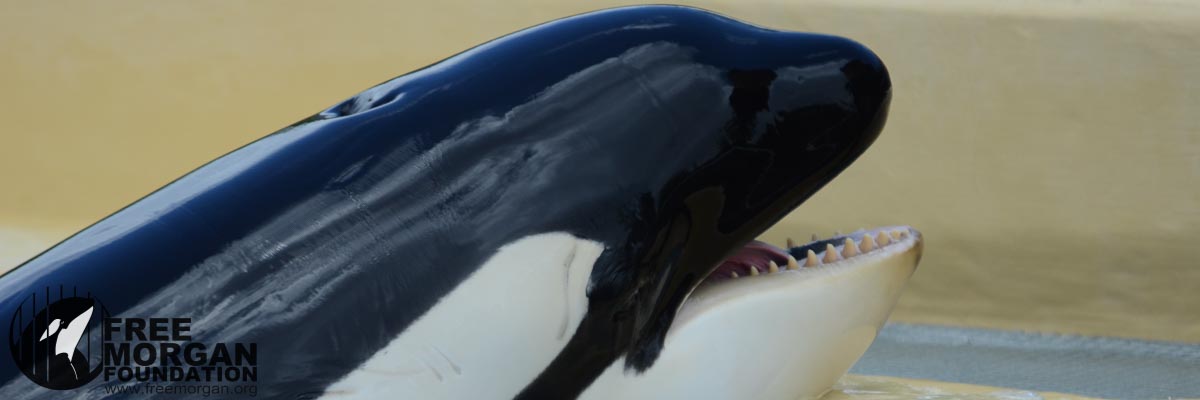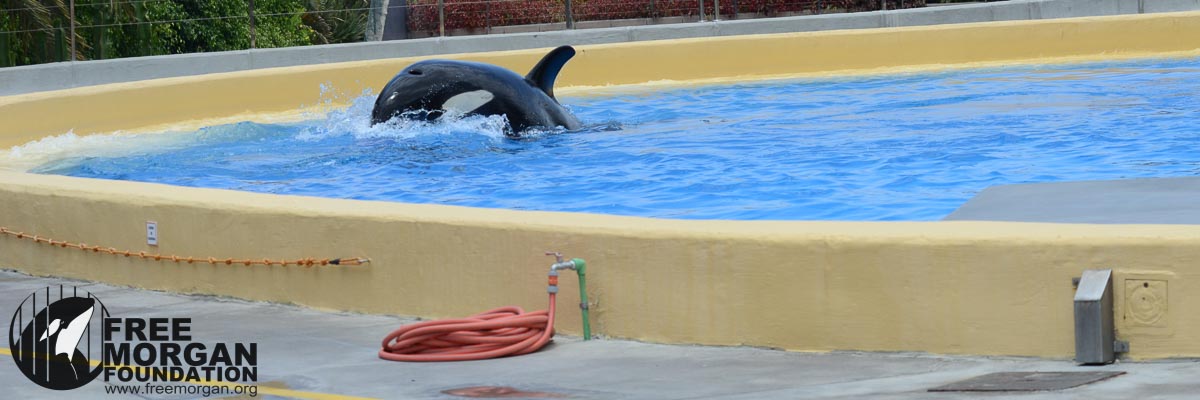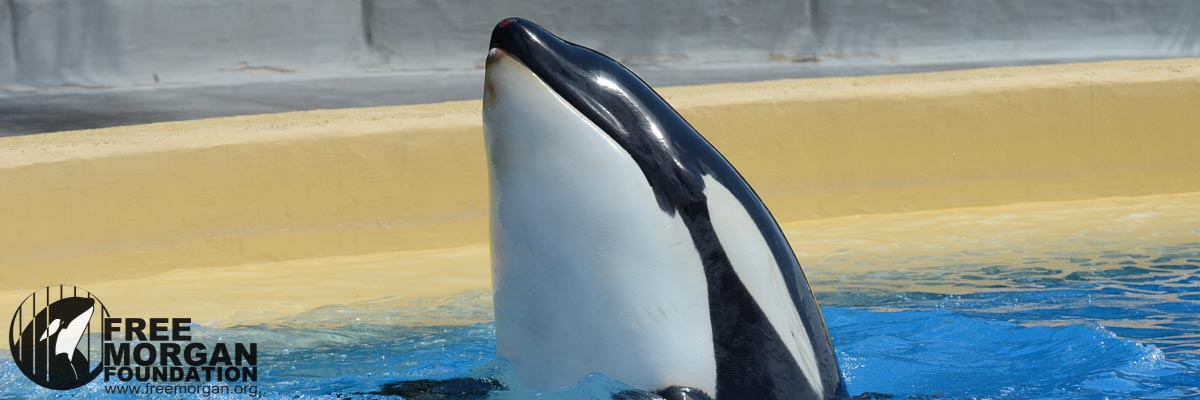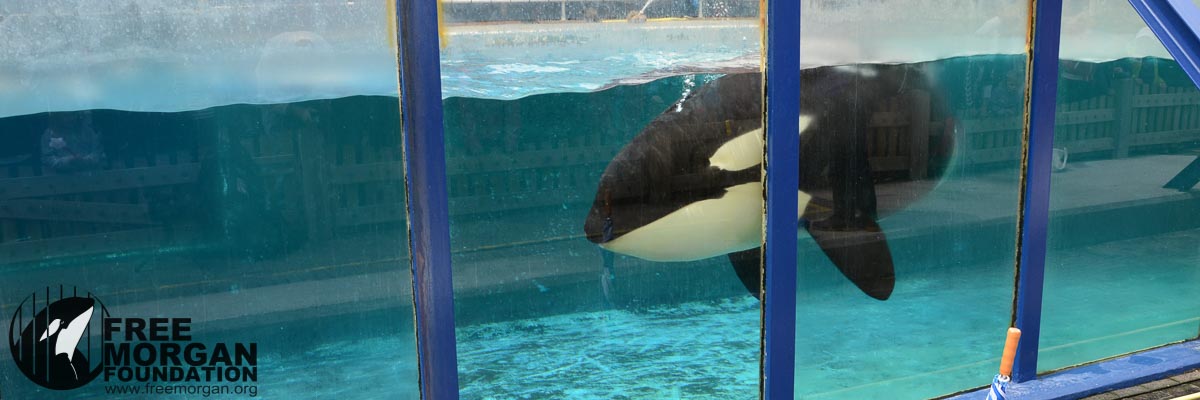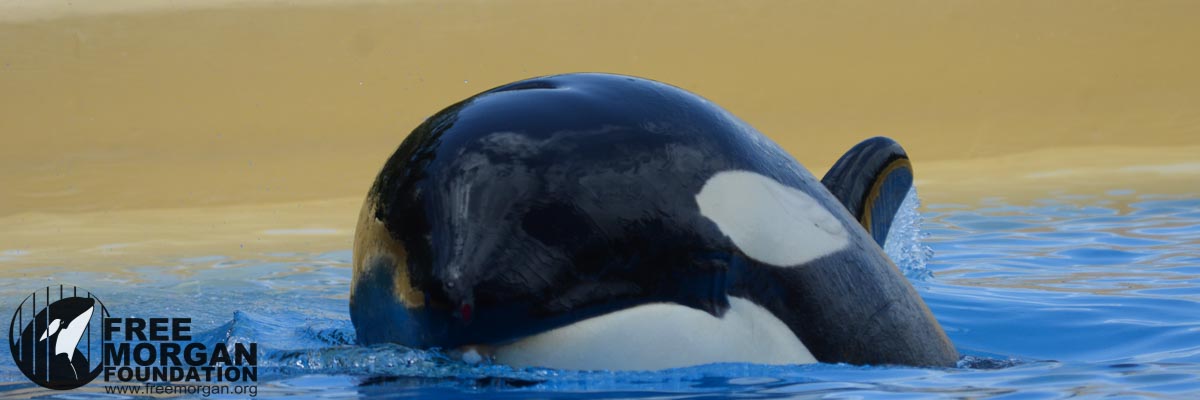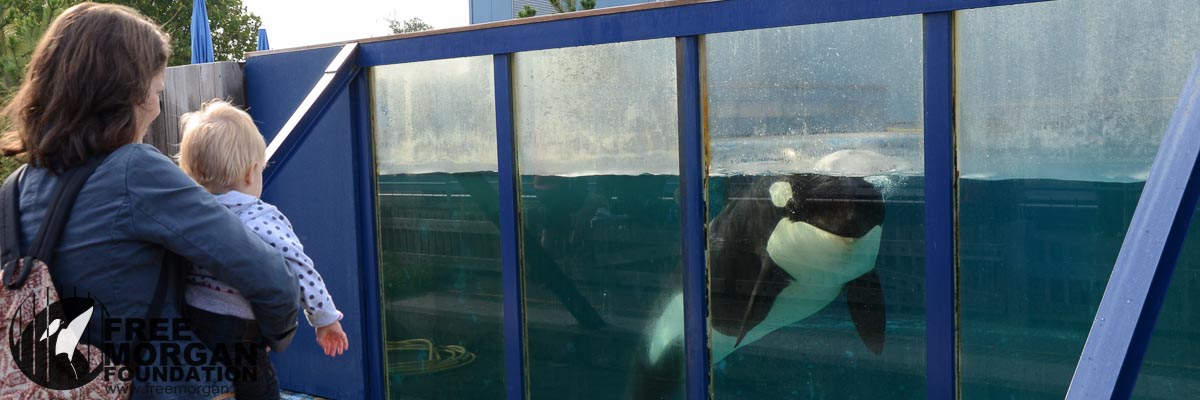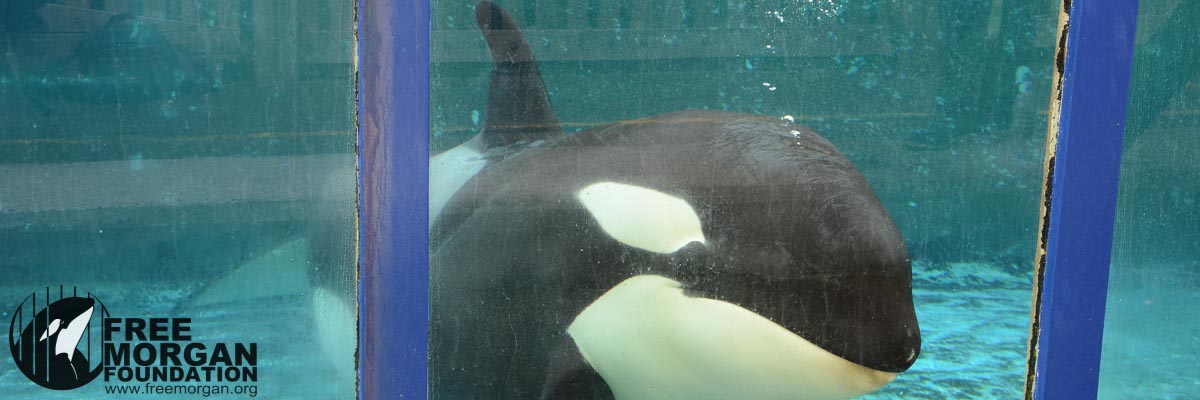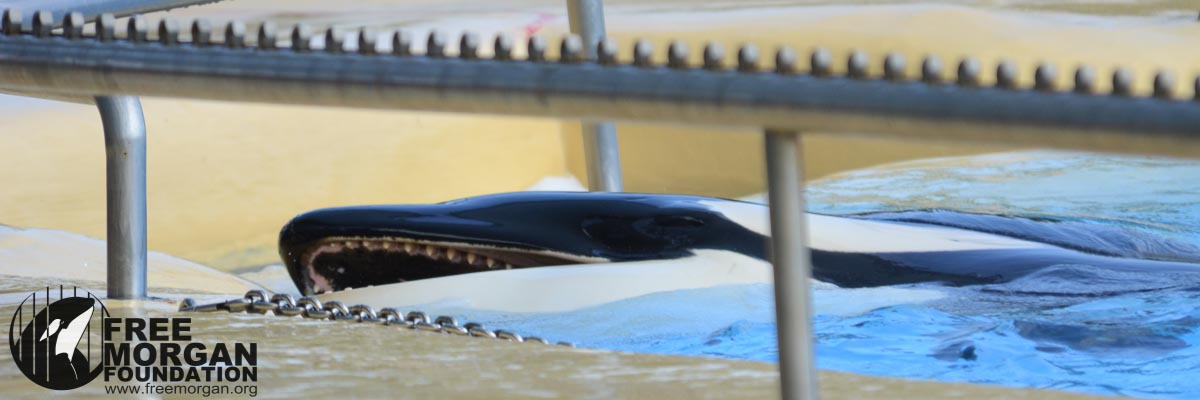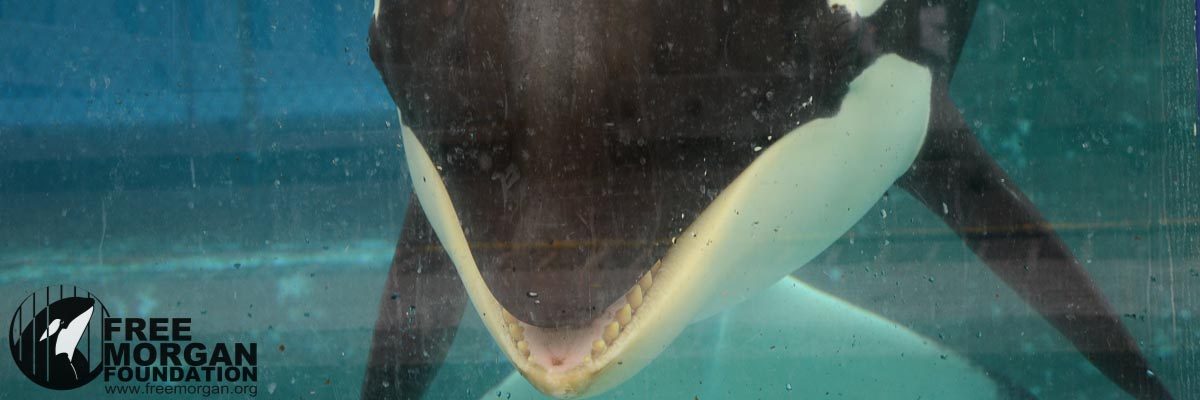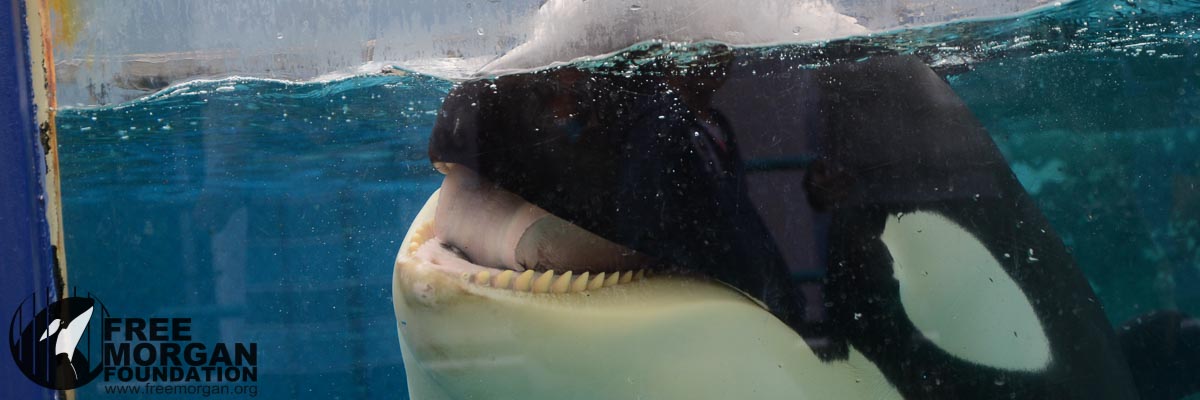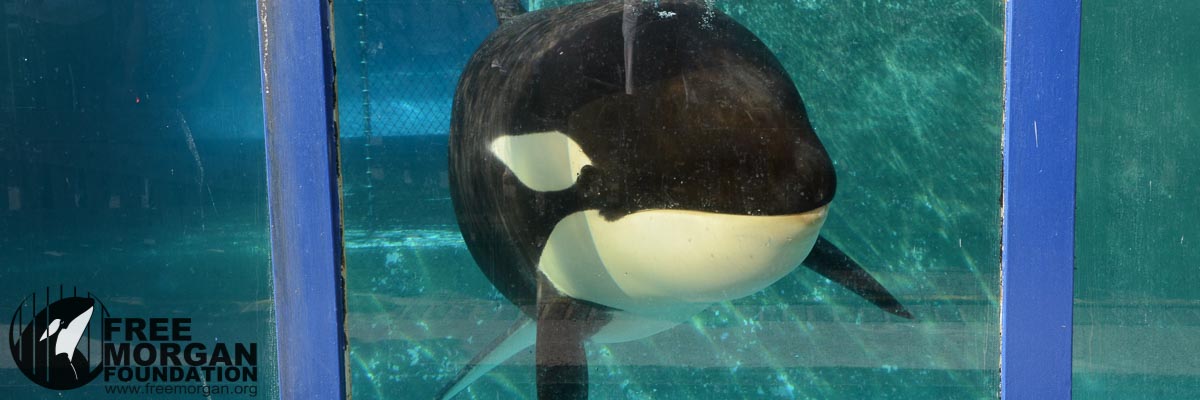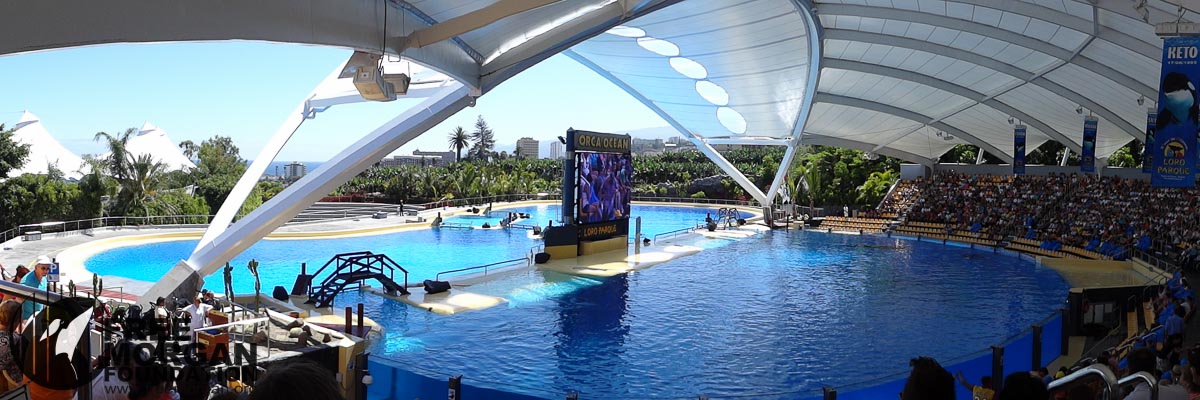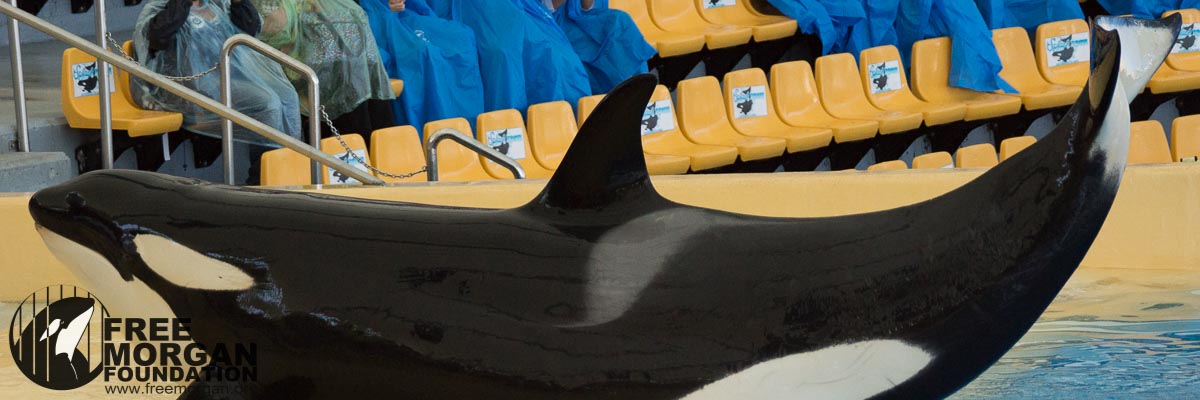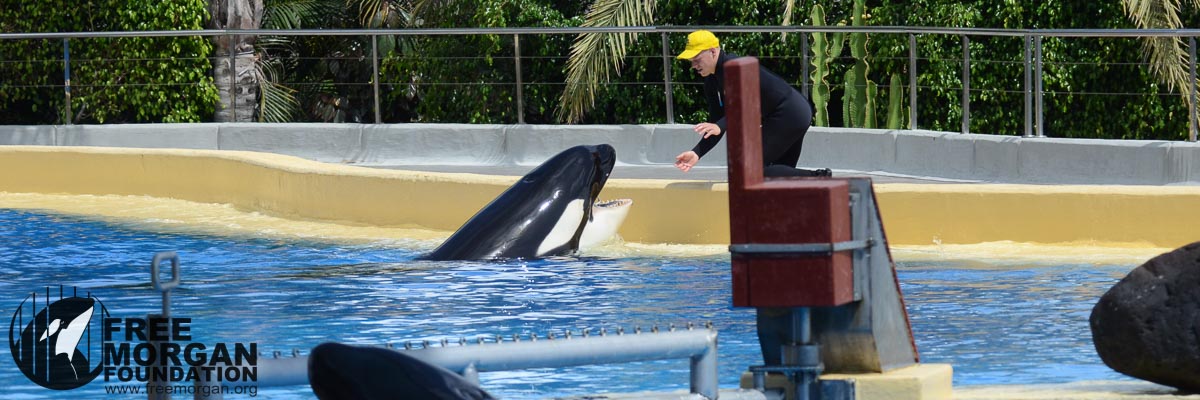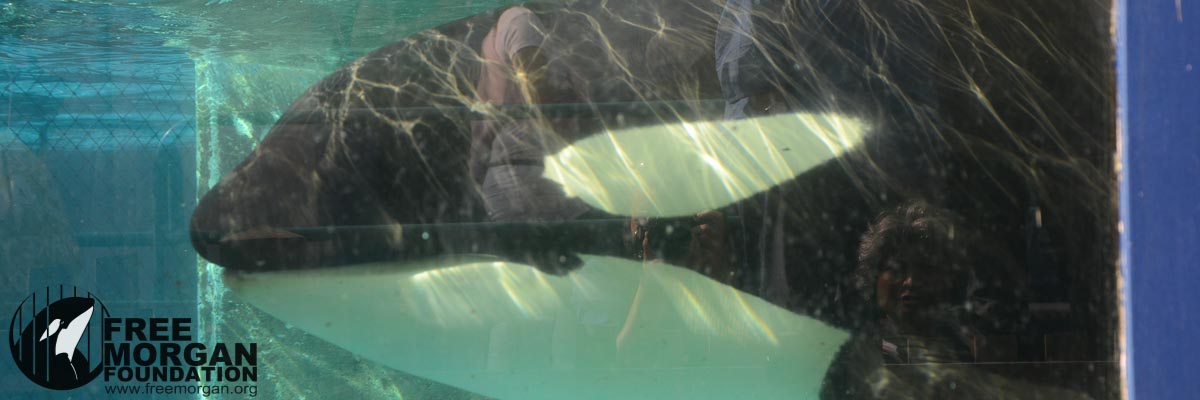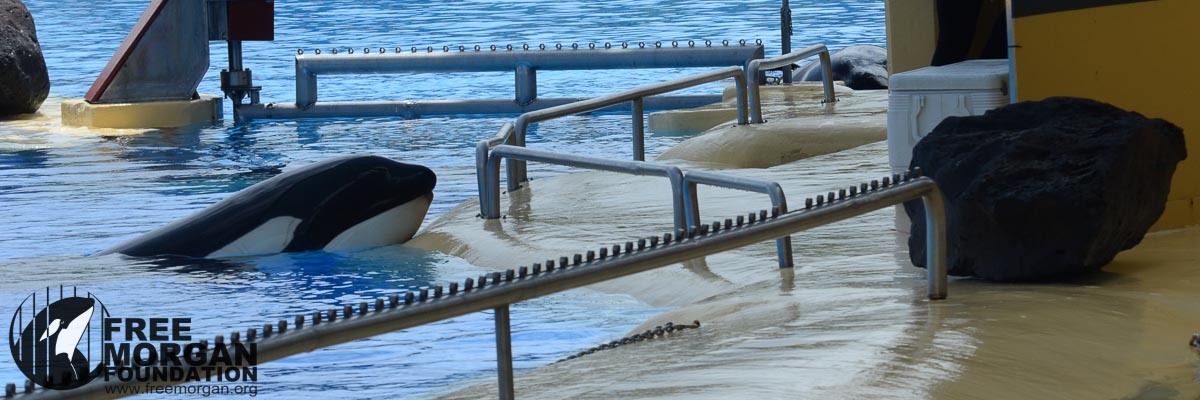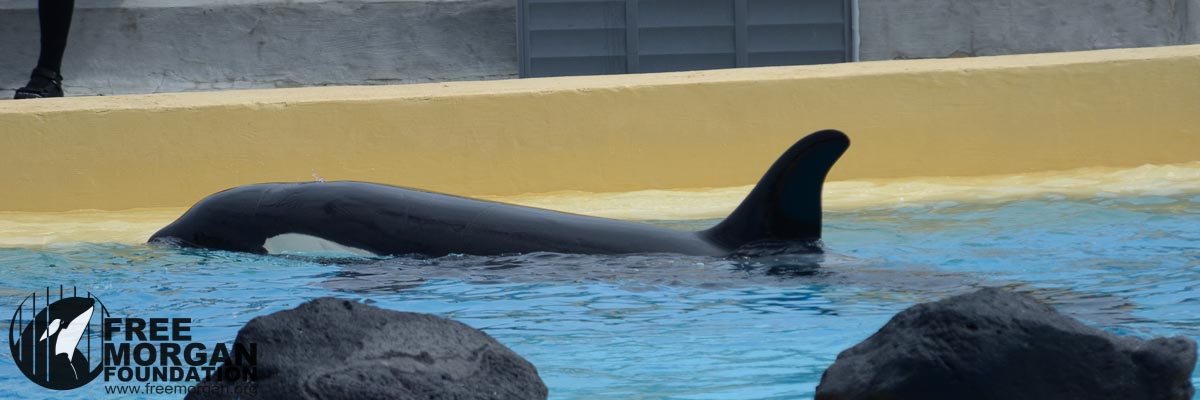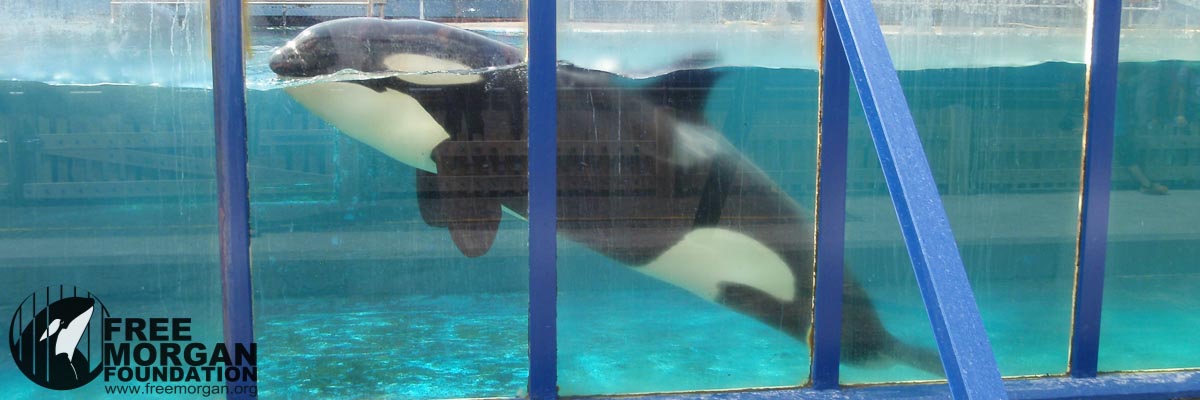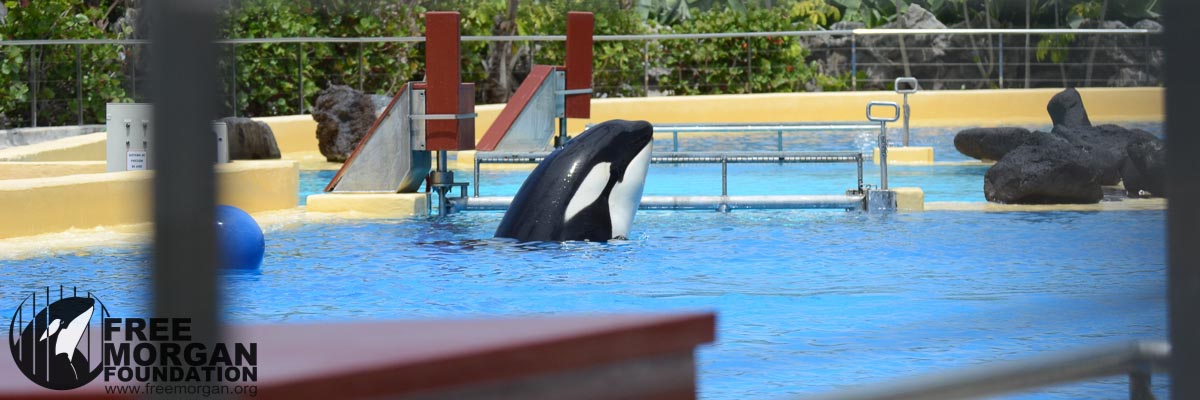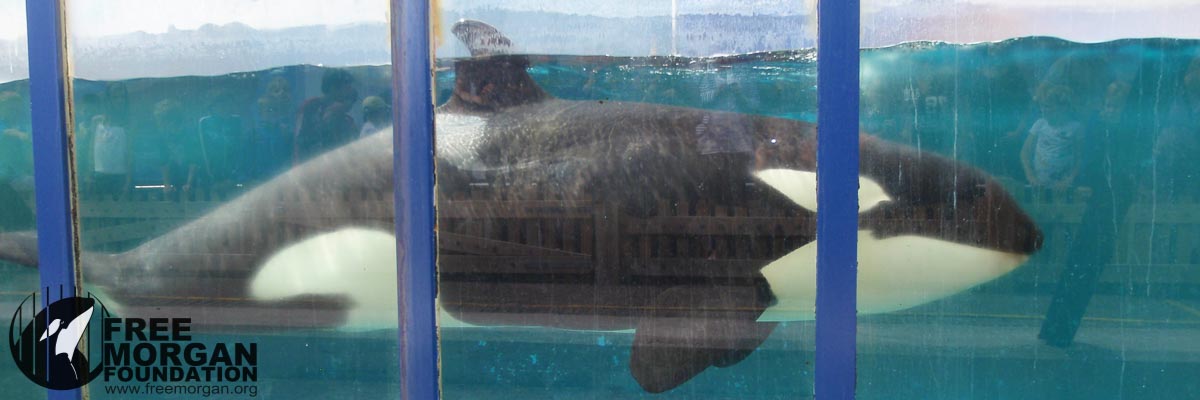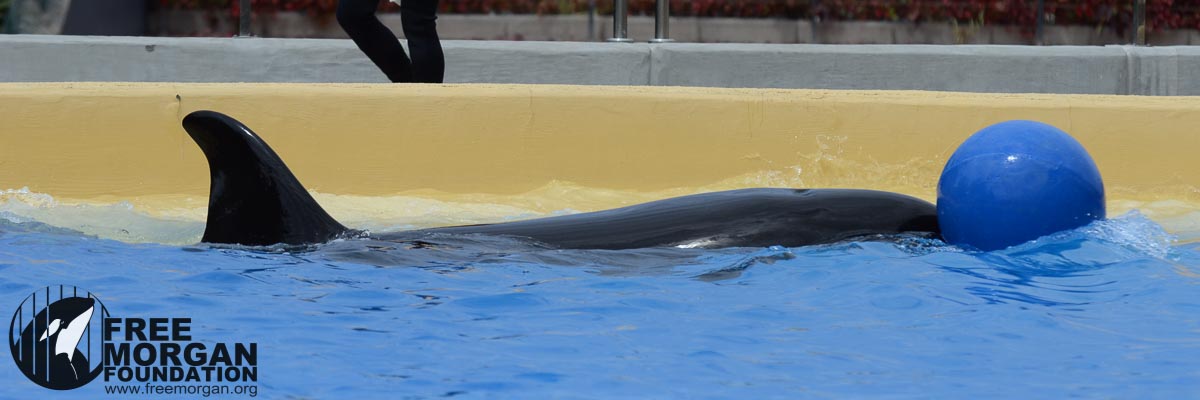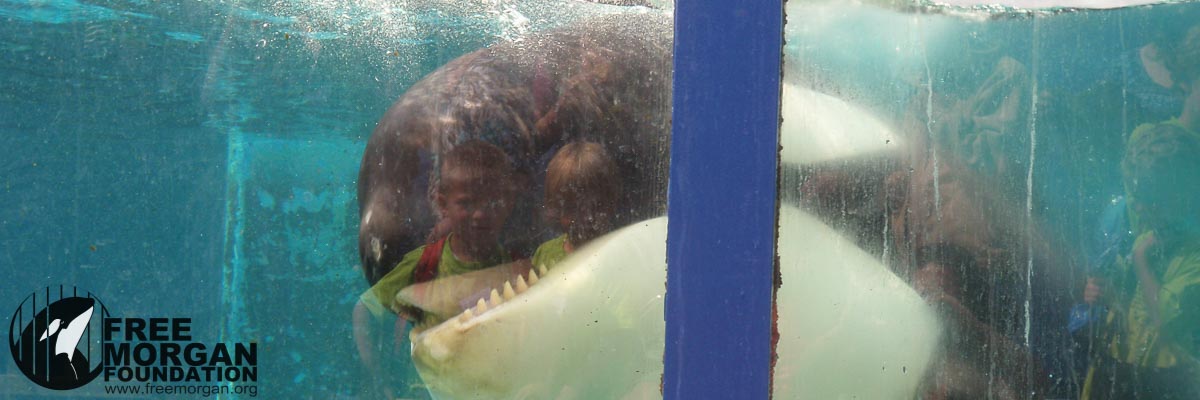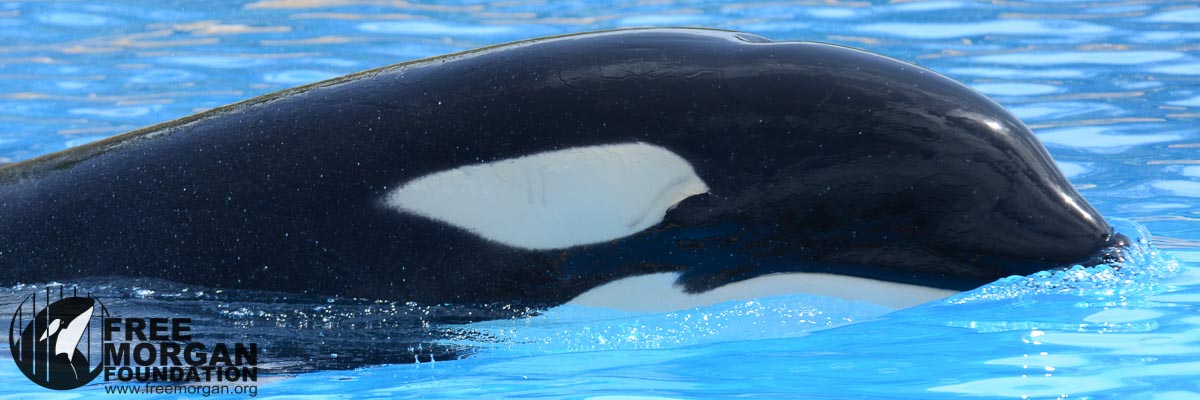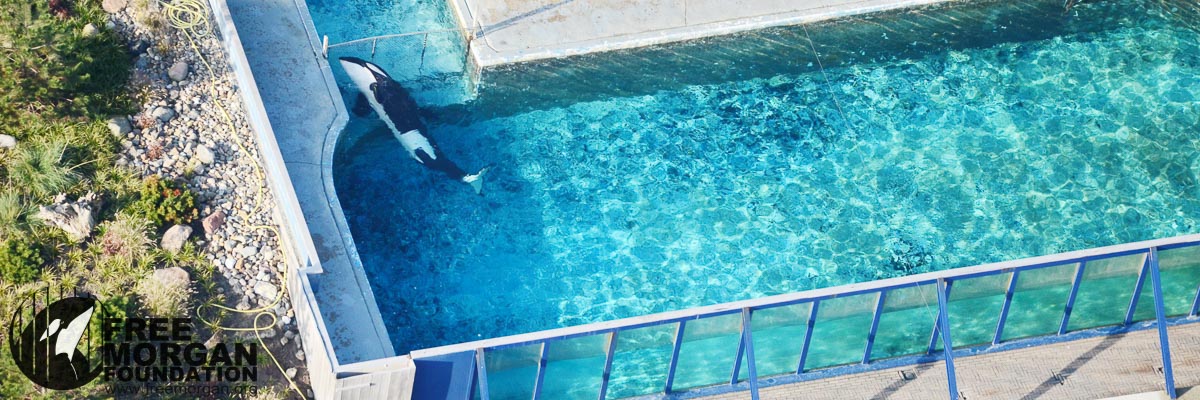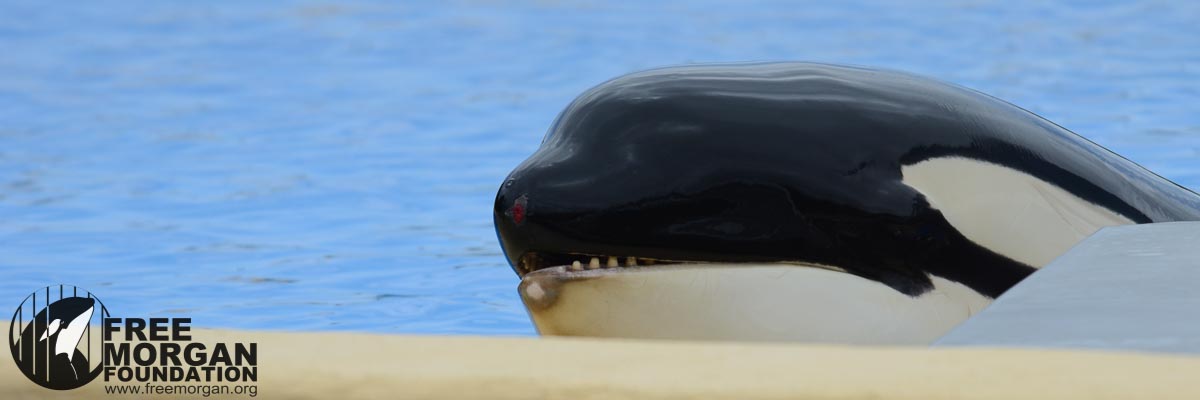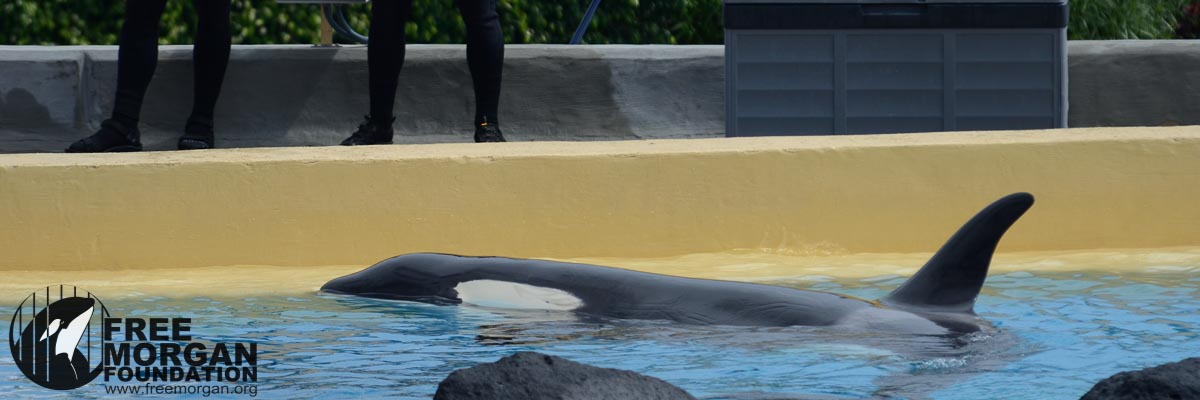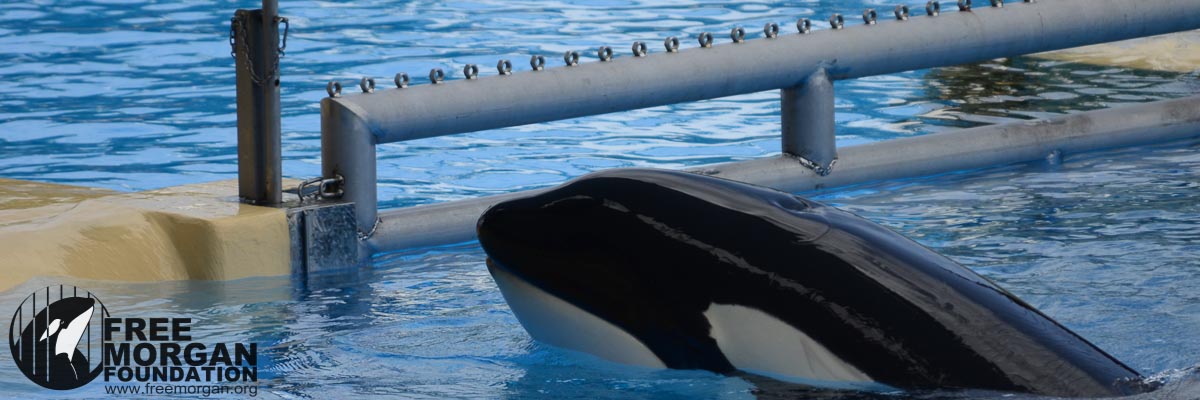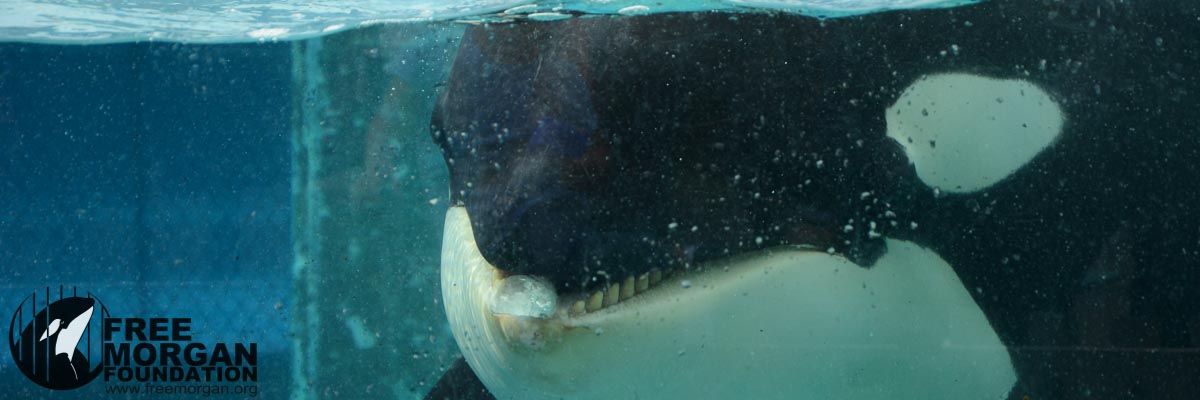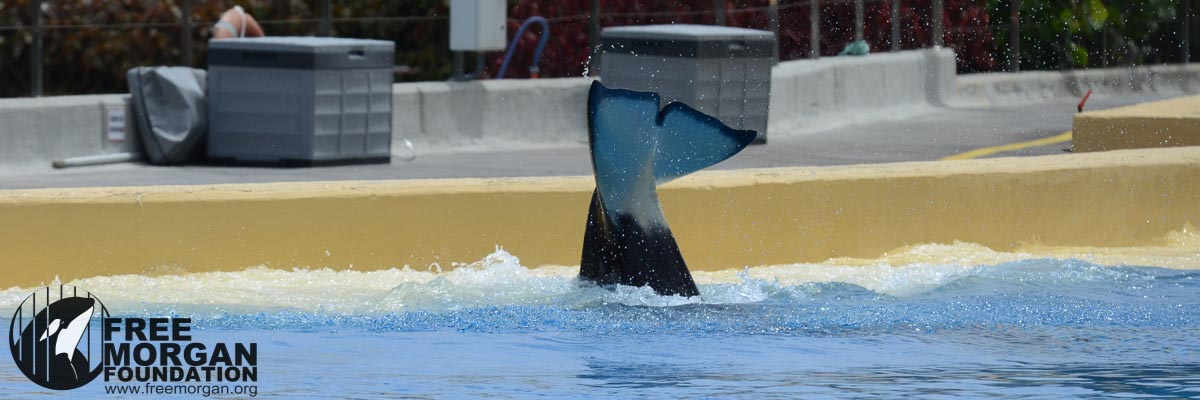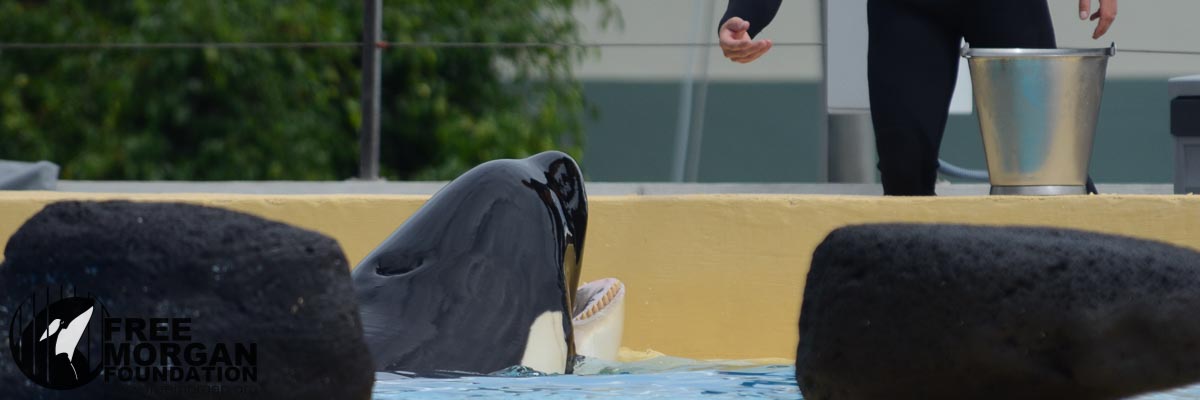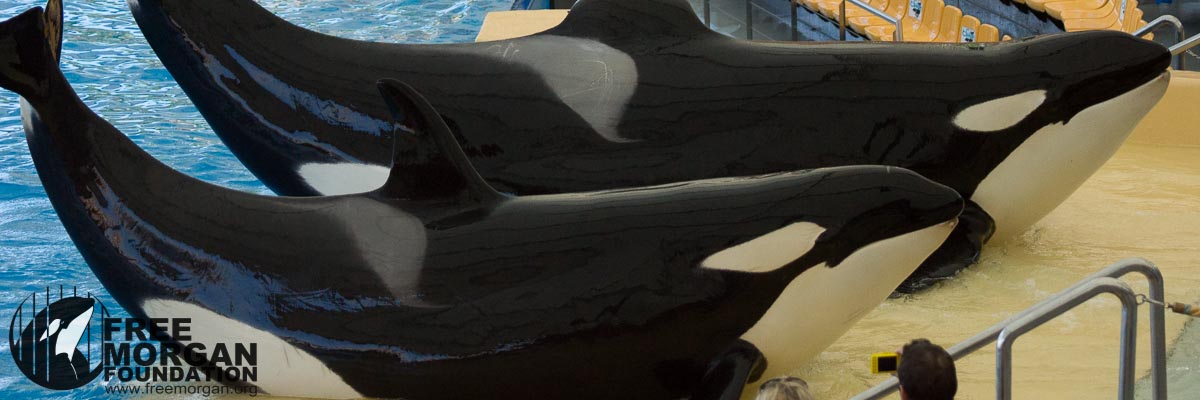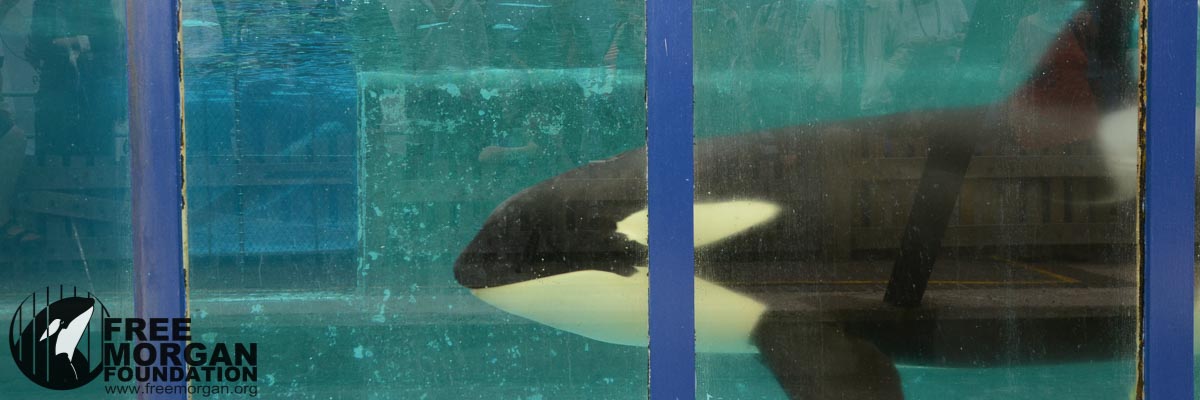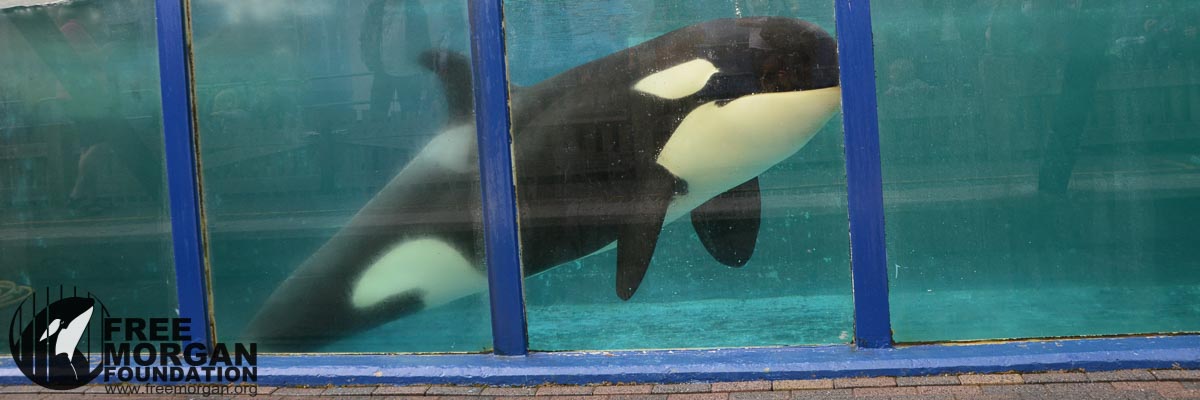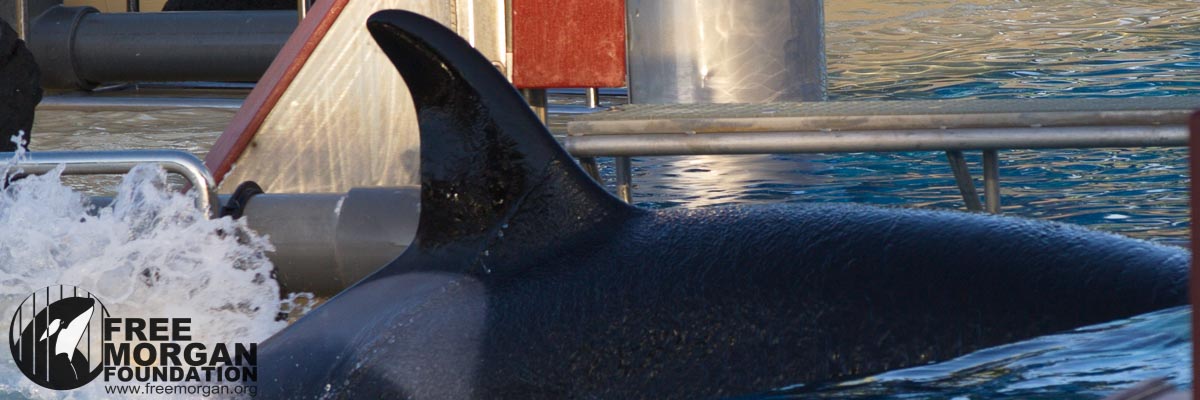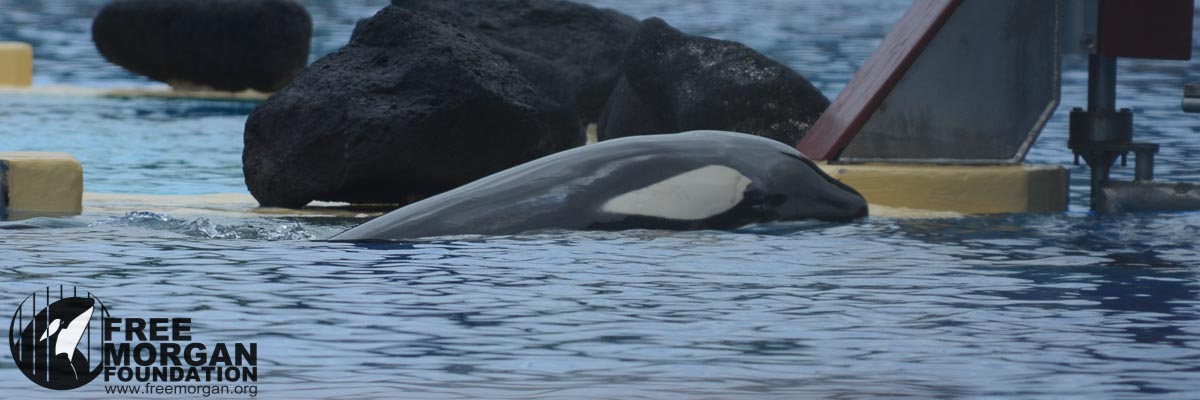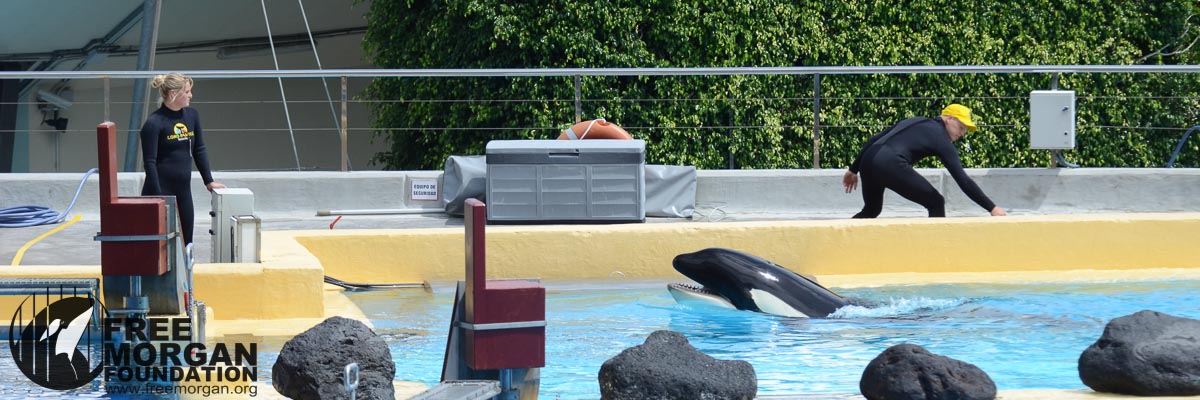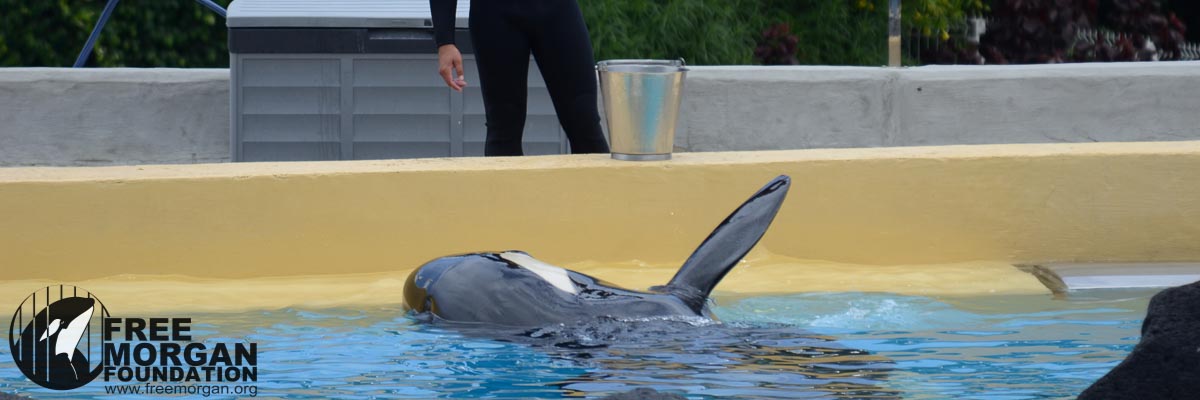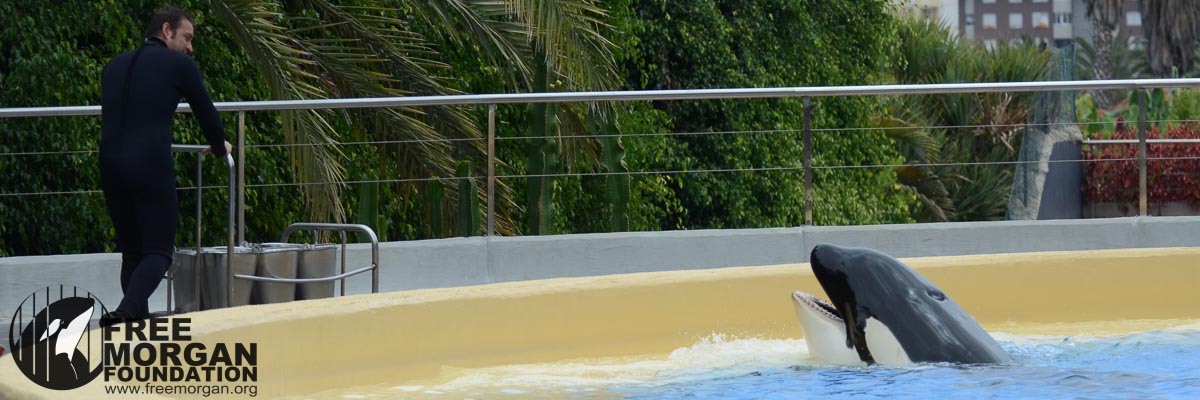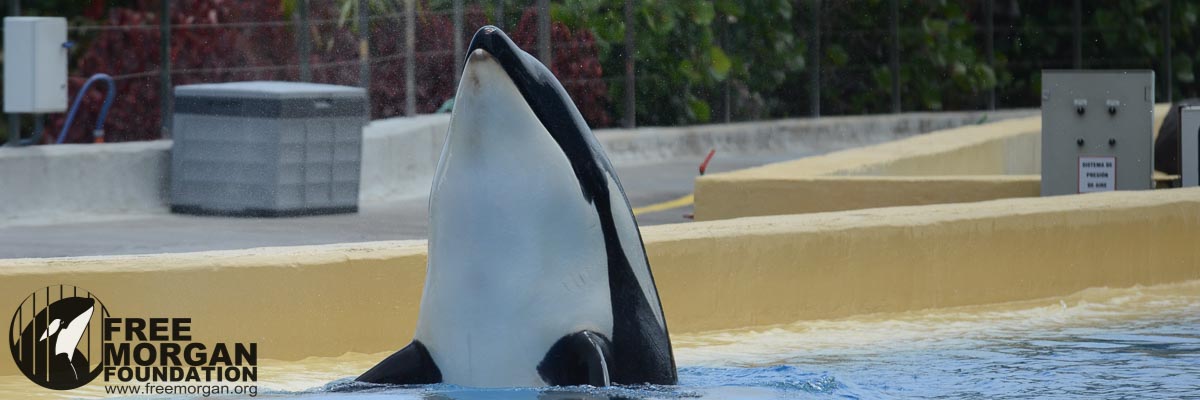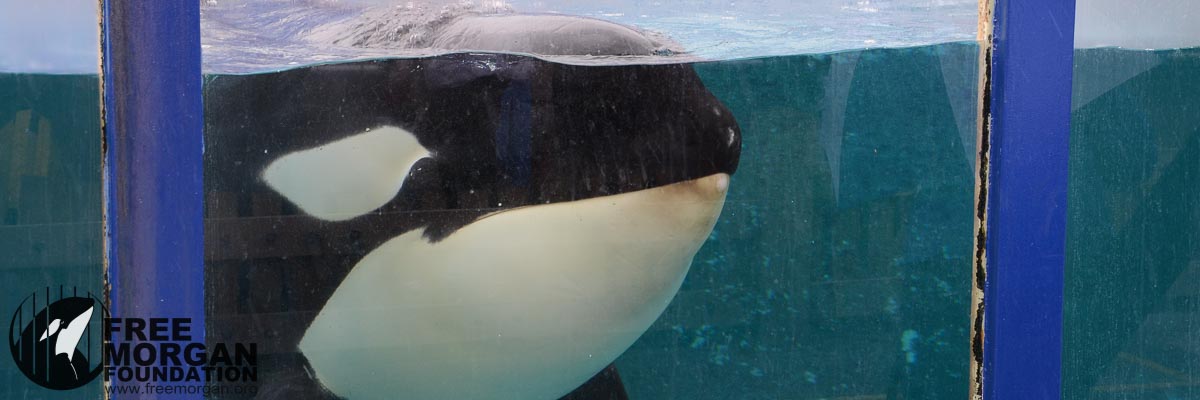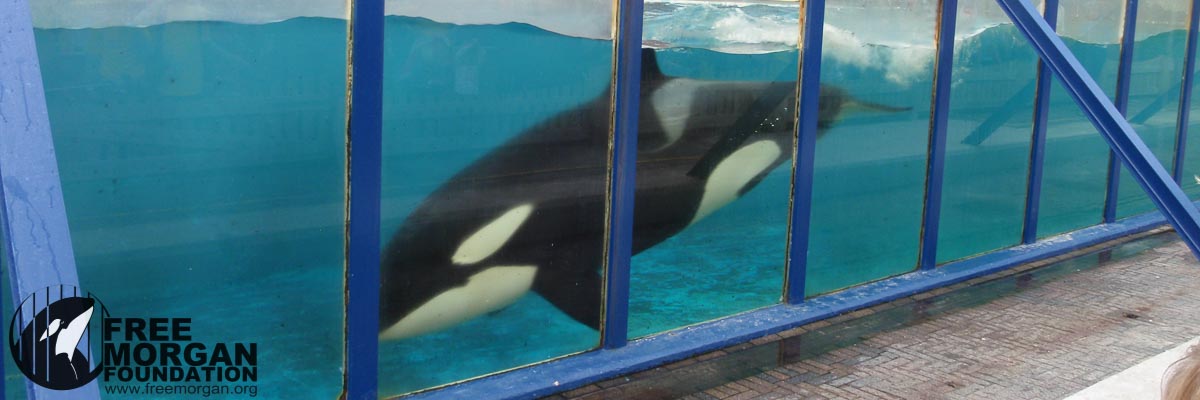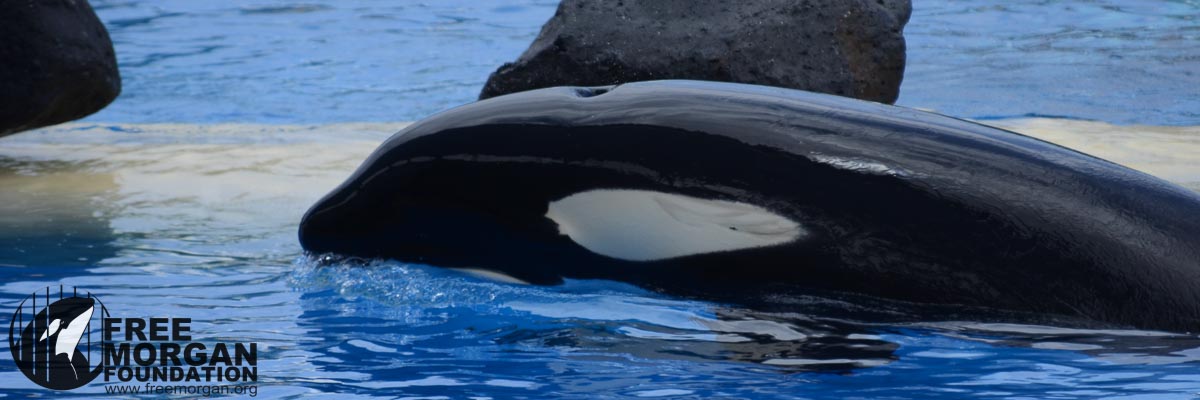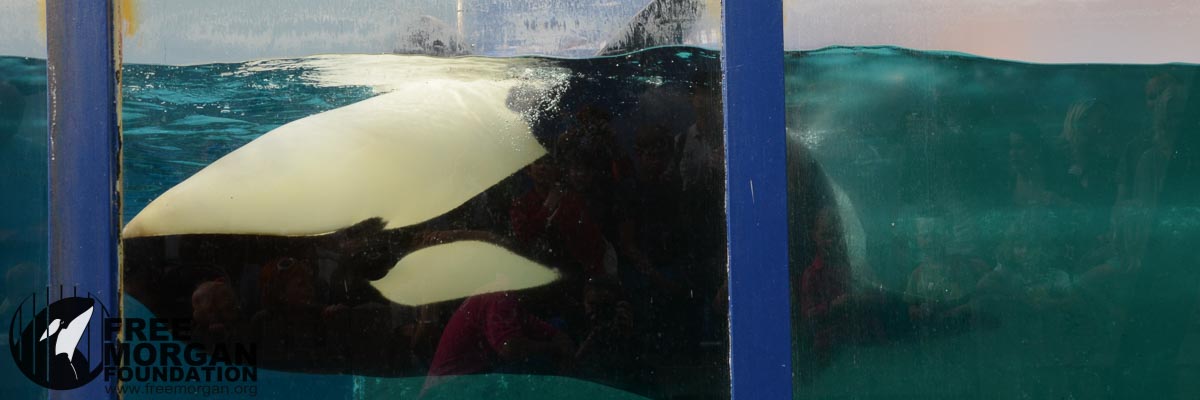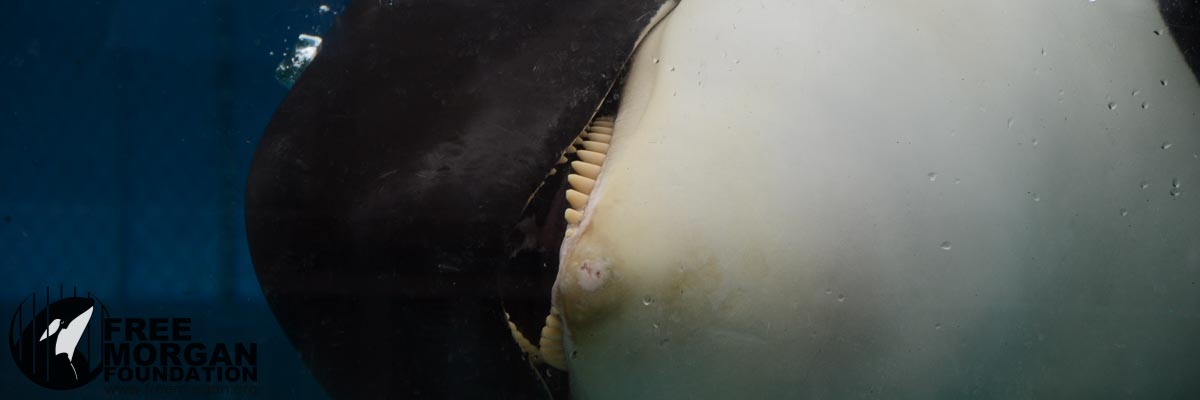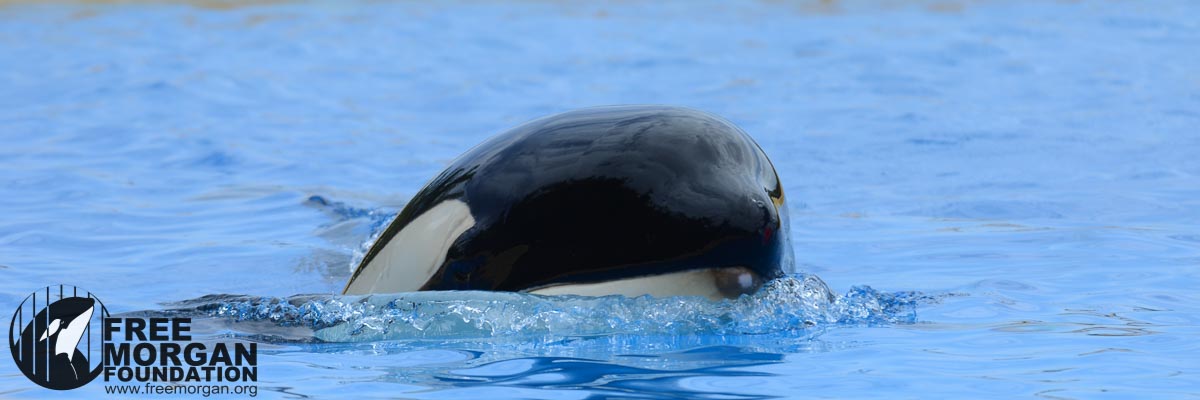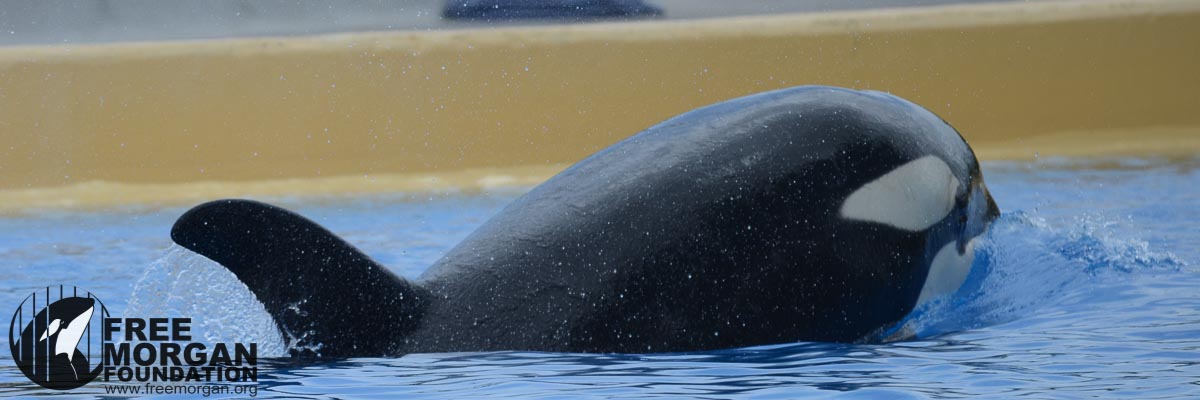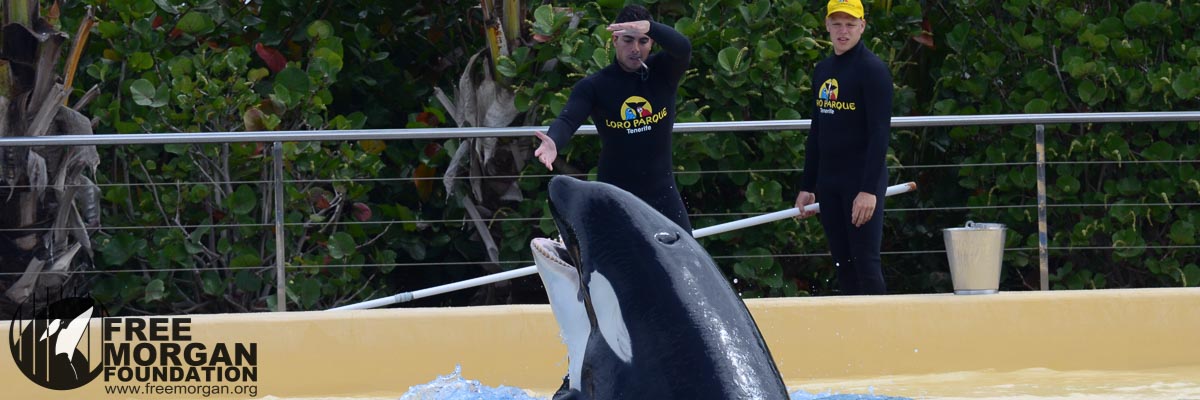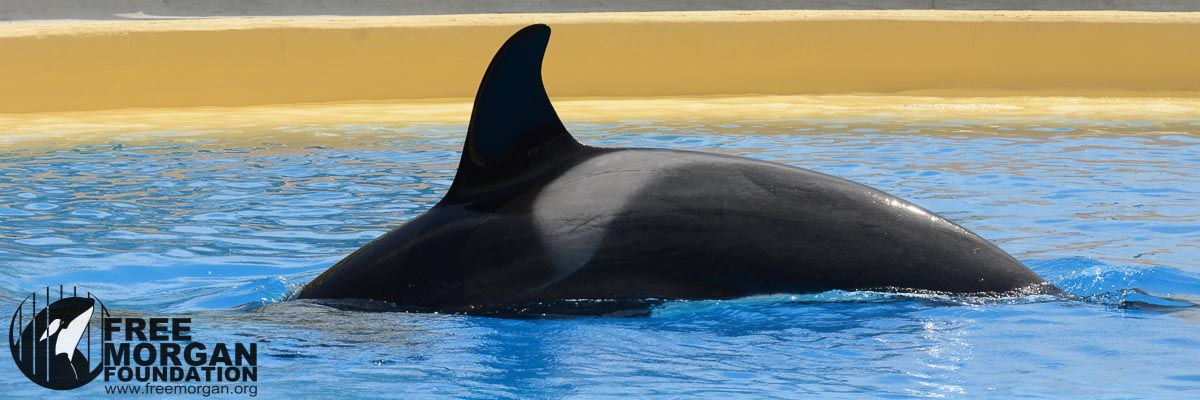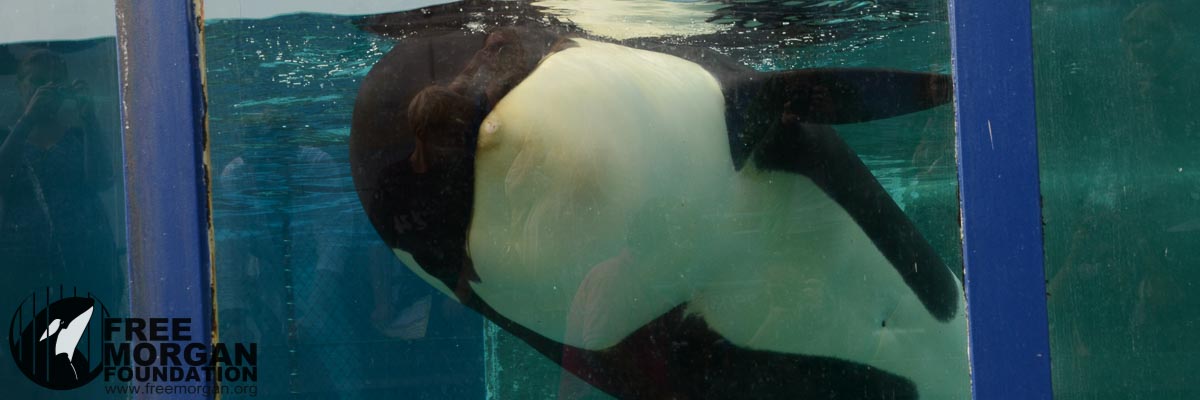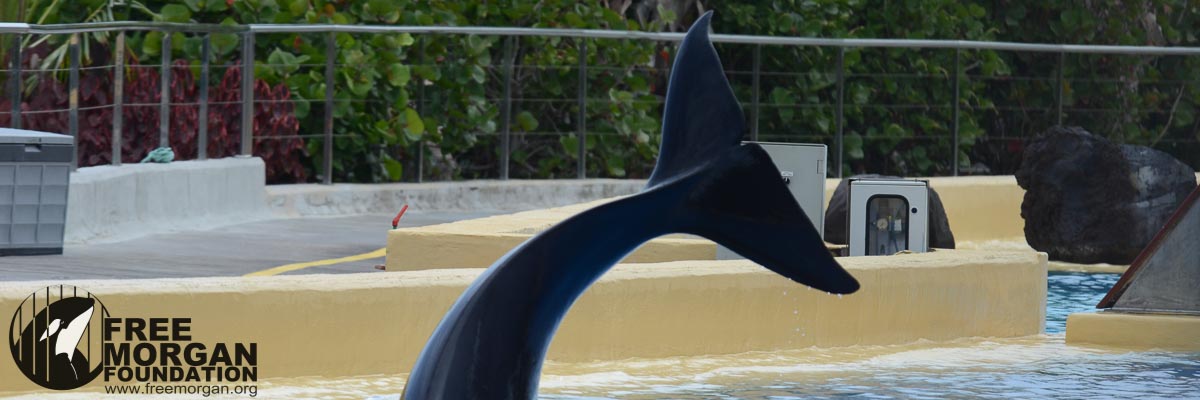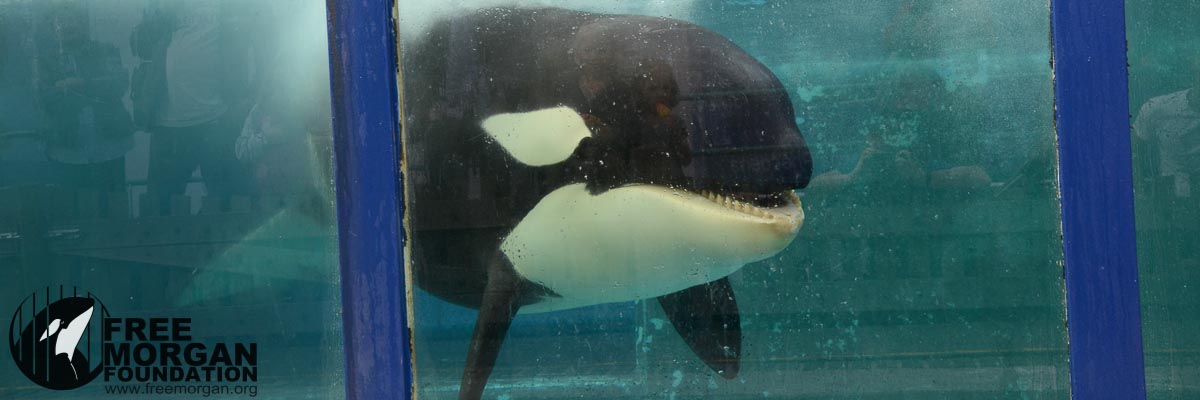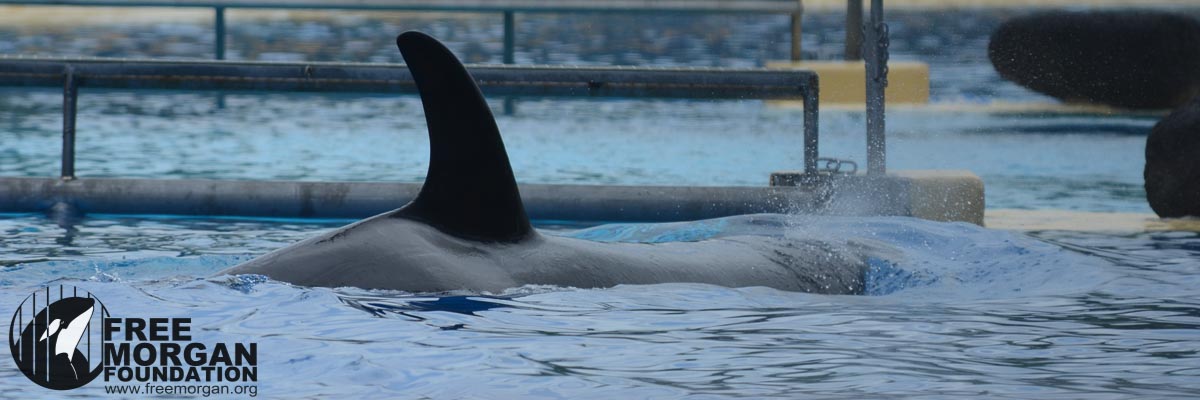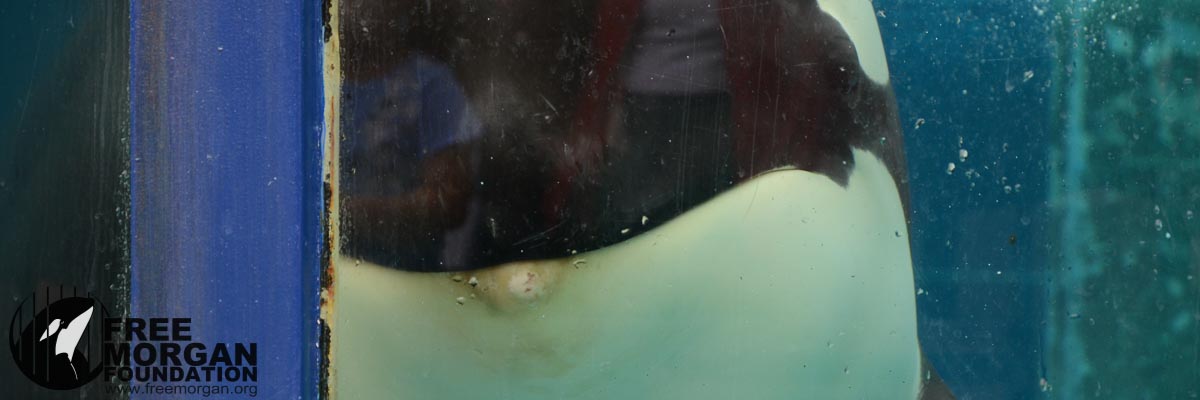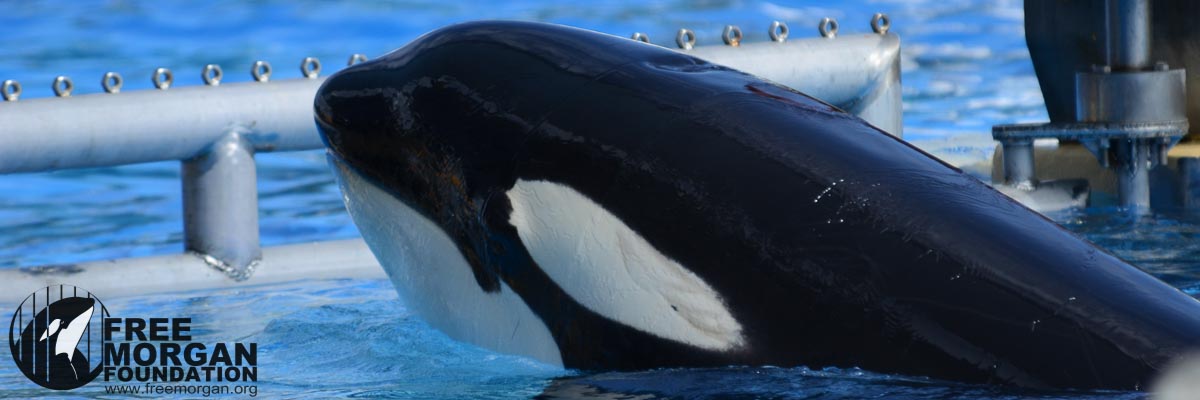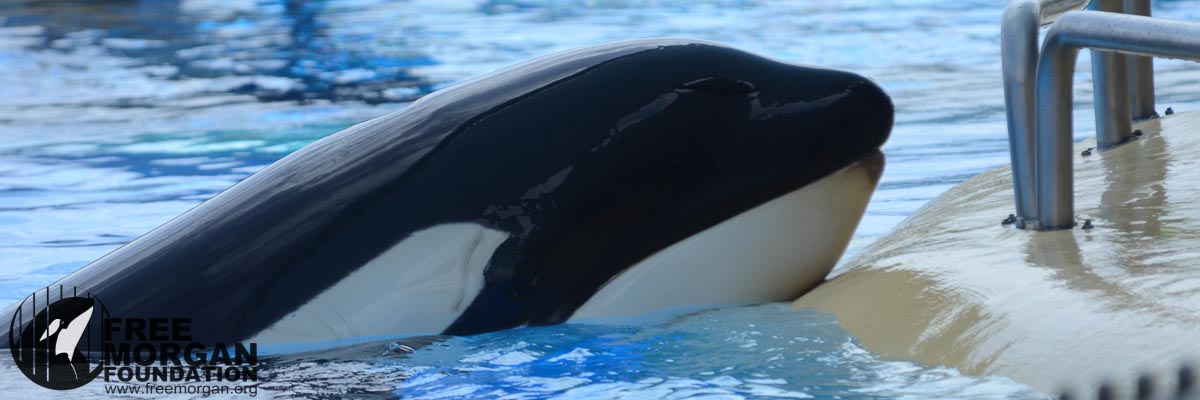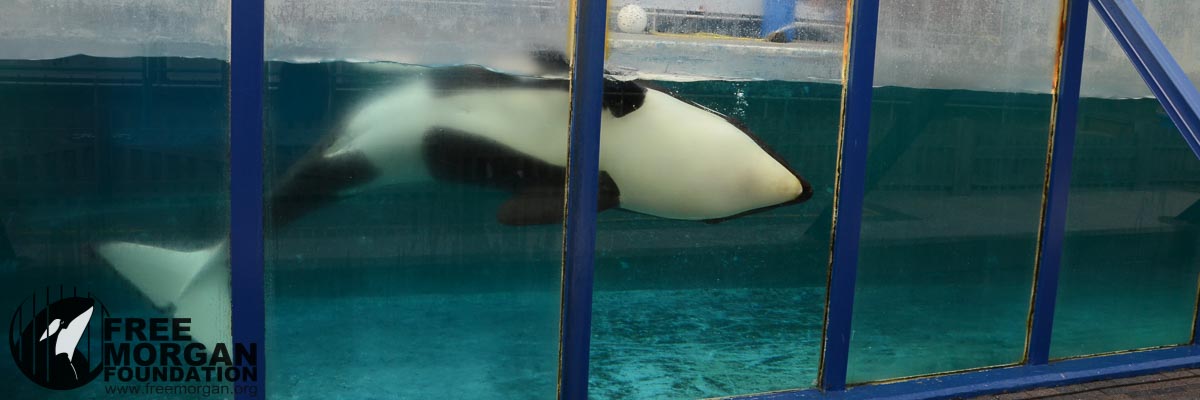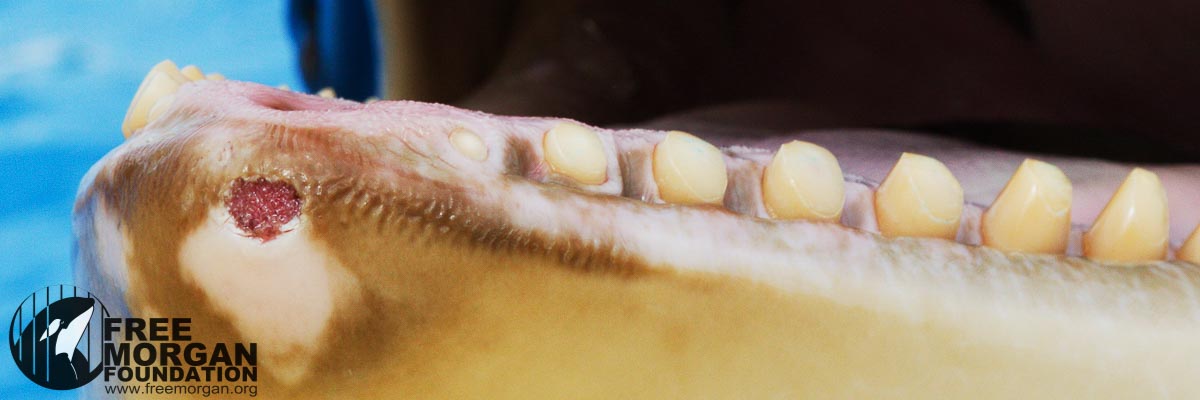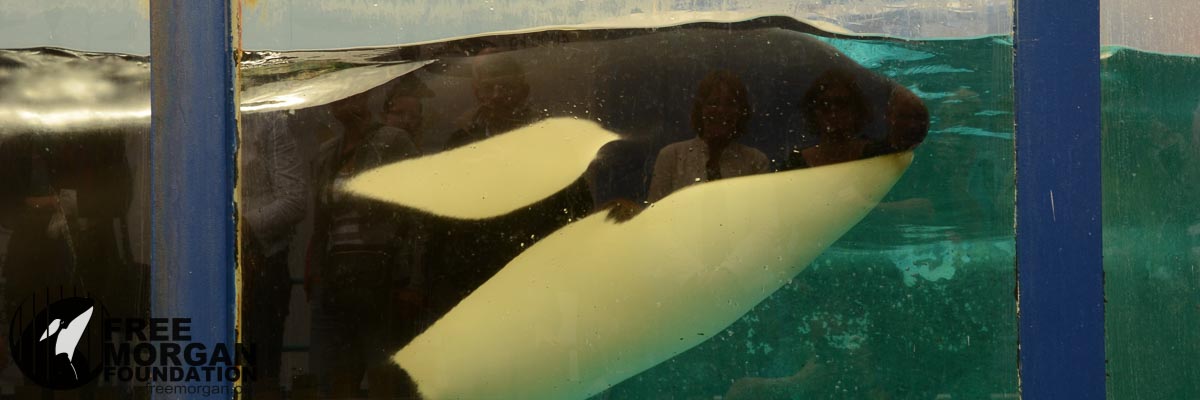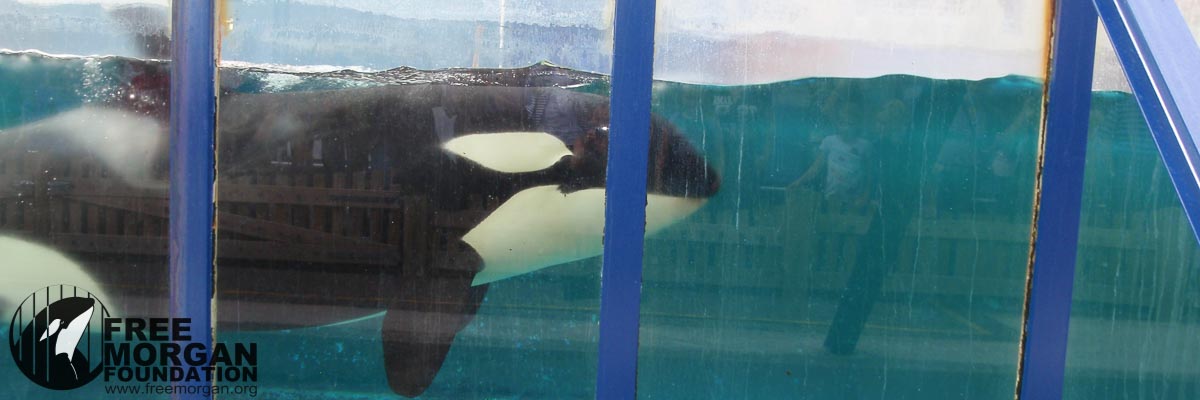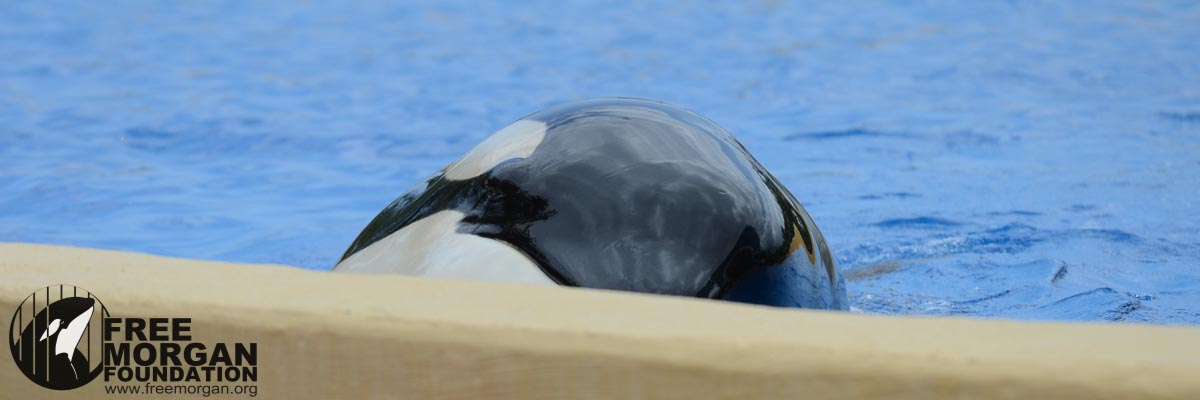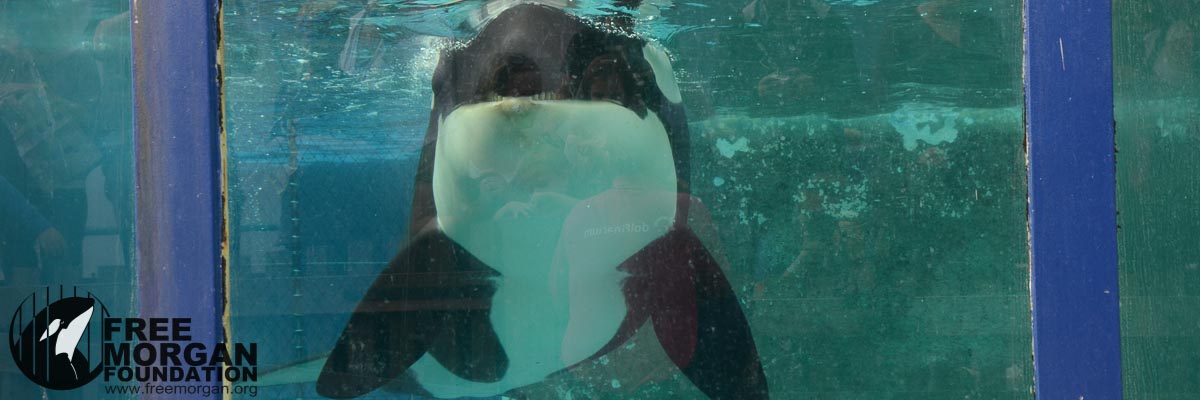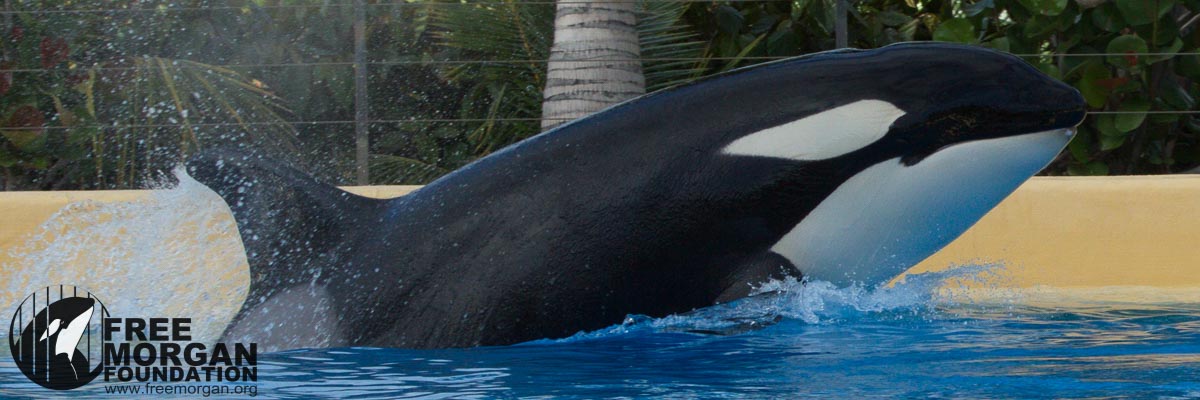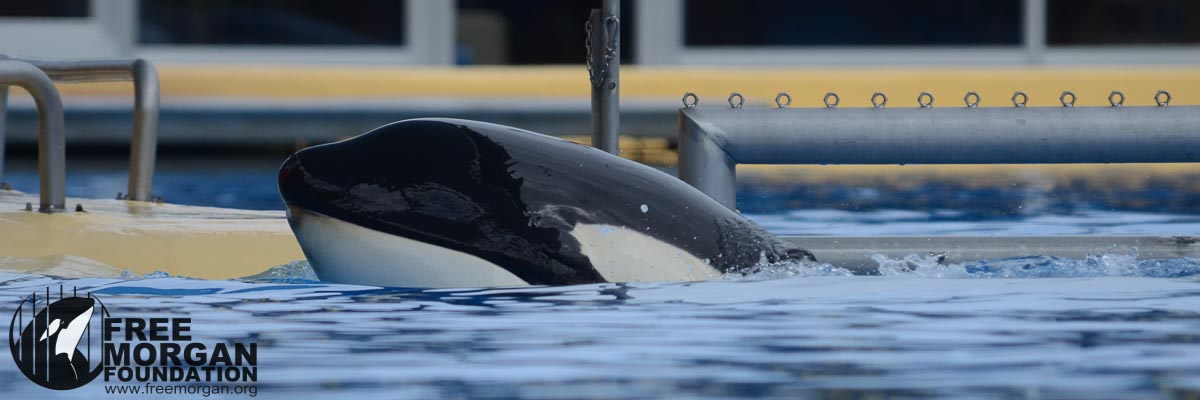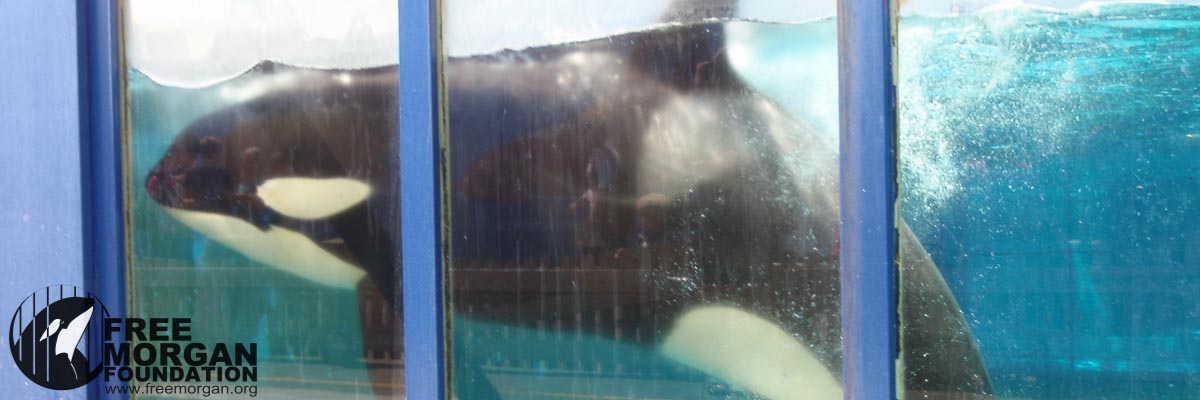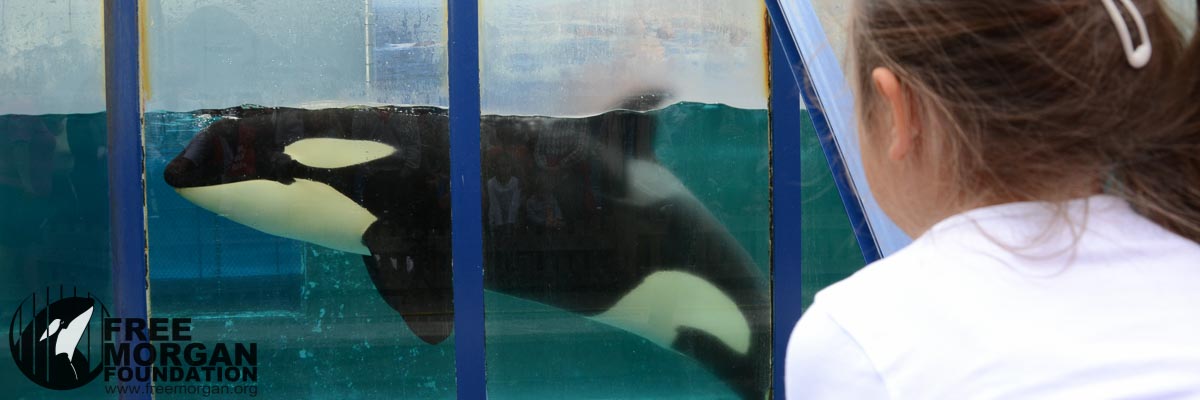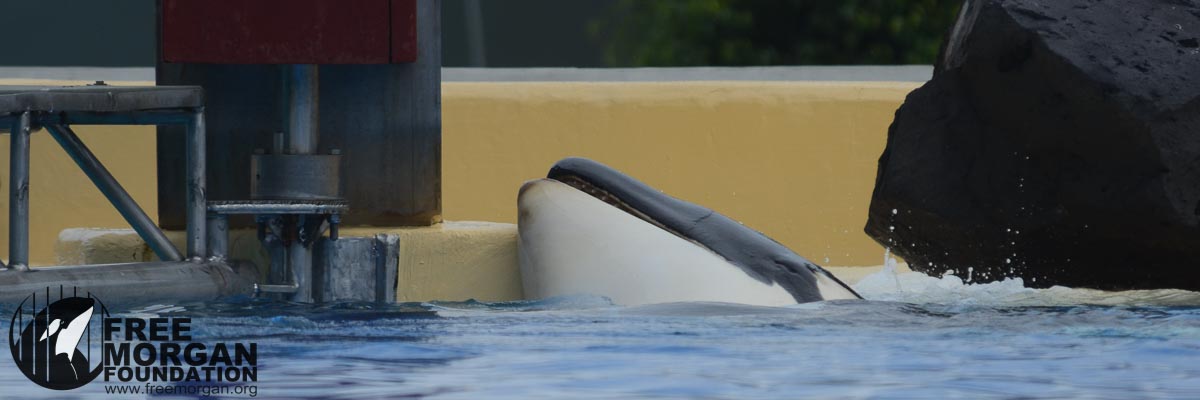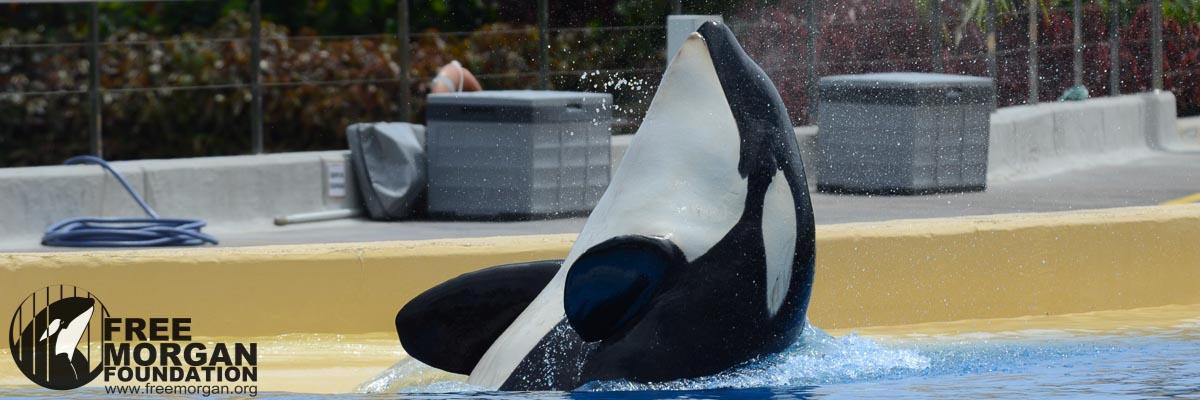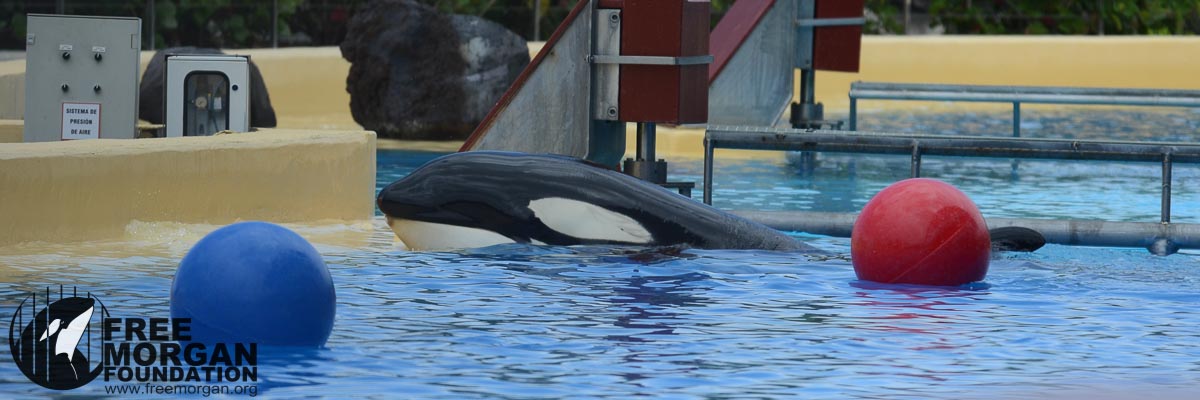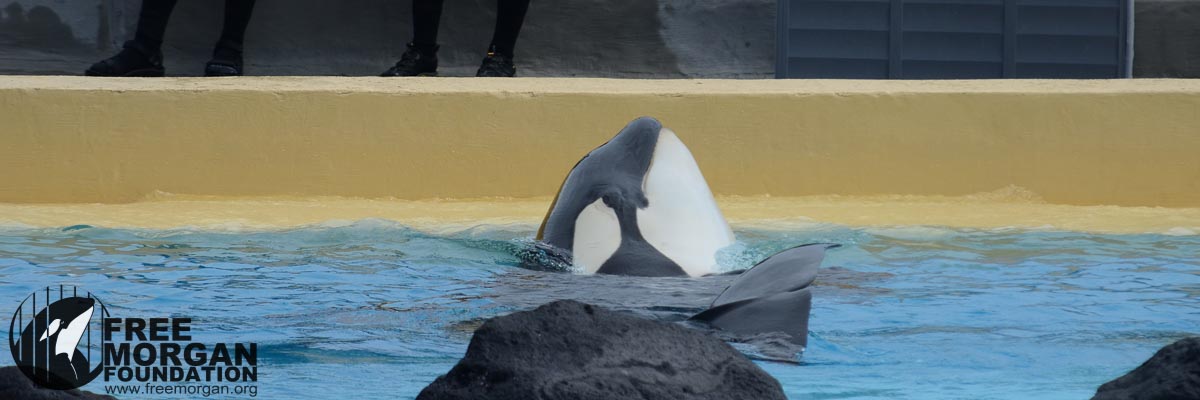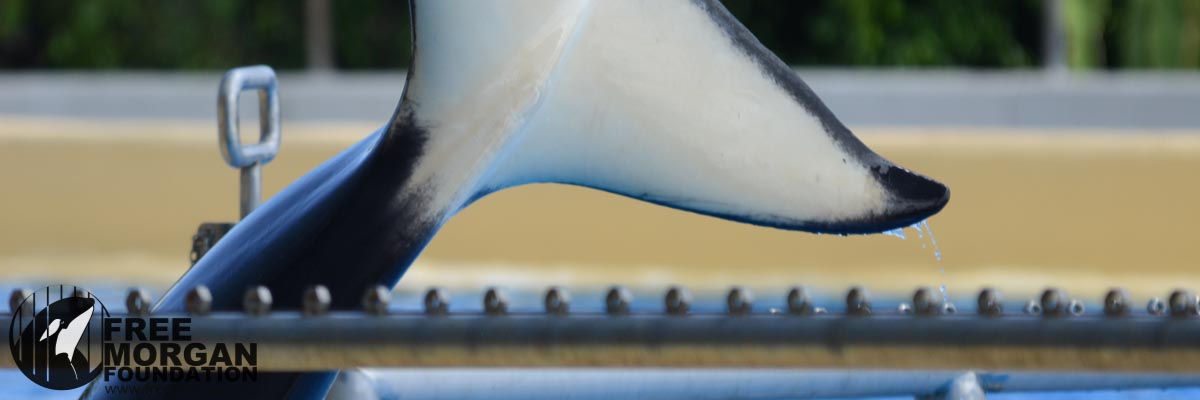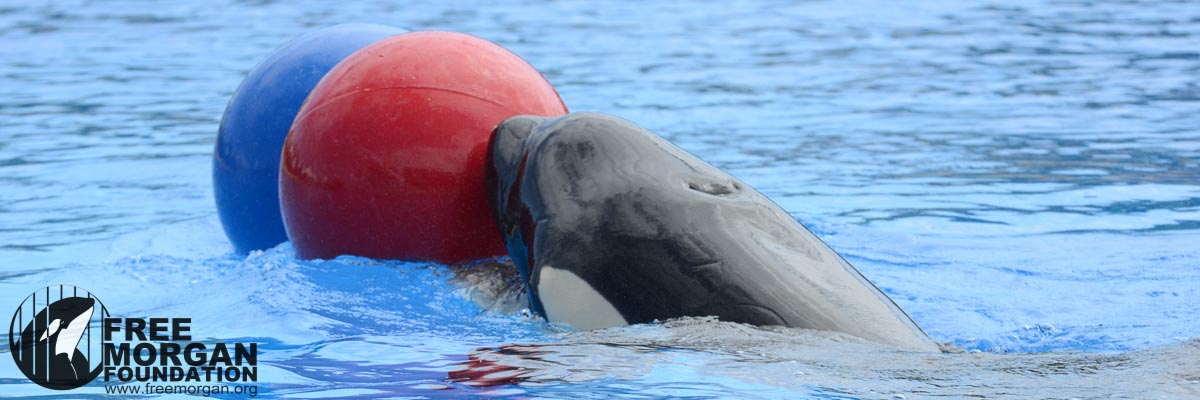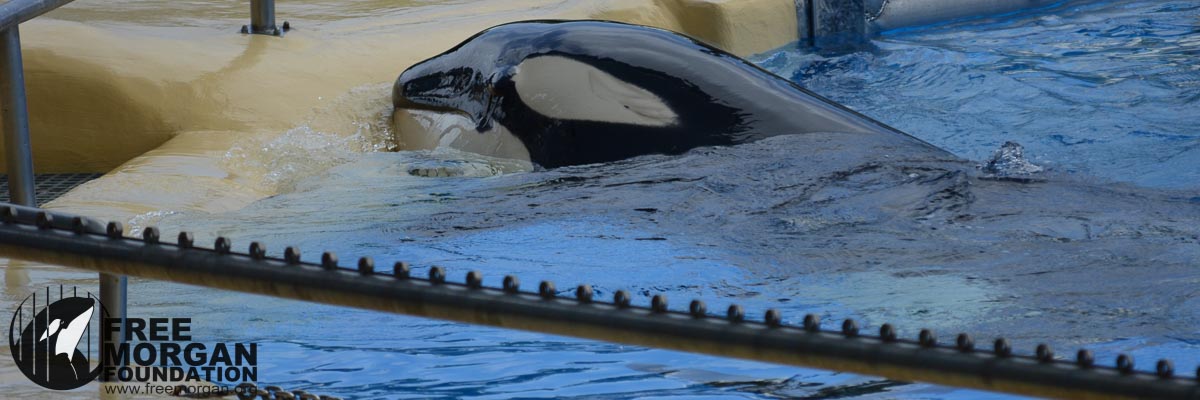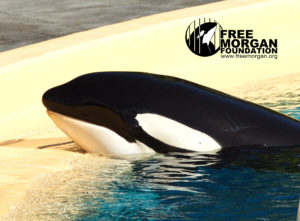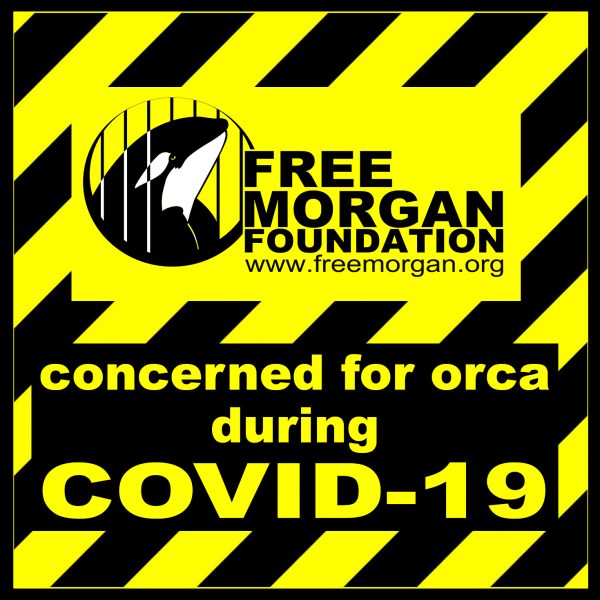Morgan’s Situation under investigation
In October 2021, the Dutch Investigative TV show Zembla produced a documentary about Morgan’s situation at the entertainment theme park Loro Parque.
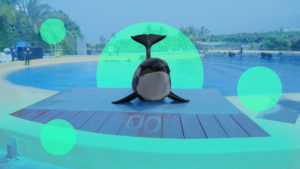 Following the succes of the Dutch version and the interest it garnered, they have produced an English version which you can watch on their online Channel on 18 November 2021.
Following the succes of the Dutch version and the interest it garnered, they have produced an English version which you can watch on their online Channel on 18 November 2021.
Poor Morgan, her deformed calf has died.
On the 10th of August 2021, just weeks before her 3rd birthday, Morgan’s calf died. Morgan, who was separated by Loro Parque from her calf within just a few hours of giving birth on 22 September 2018, has suffered yet another blow in her tragic life. The female calf, which Loro Parque called Ula was born with a deformed melon (‘forehead’) and suffered a range of pathogens and health issues. Fathered by the orca Keto who killed the trainer Alexis Martinez, Ula led a tragic and short life. Read more about the situation as it developed on our page Morgan’s pregnancy.
10 Years on and the violations against Morgan continue.
The tragic consequences of the mismanagement of the ‘rescue’ of Morgan the orca have had long-term repercussions. Given a ‘clean bill of health’ by the veterinarian involved with capturing her in the Netherlands, she was not returned to the ocean, but she was shipped to Loro Parque where it was suddenly claimed that she had lost her hearing. How could such a thing have occurred? There is evidence from other cetaceans that have been shipped by plane that the drugs used can cause deafness. Morgan was transported by two facilities with a commercial interest in her; Dolphinarium Harderwijk (in the Netherlands) and SeaWorld (in the USA). Since her arrival at Loro Parque (in Spain), she has been bitten, bullied and according to Loro Parque ‘accidentally’ allowed to get pregnant, then when her deformed calf was born she was separated from her. These atrocities, and others, are a chain of events that Morgan should never have been exposed to.
Loro Parque, Dolphinarium Harderwijk (who captured her) and SeaWorld (who claim to have owned her but who pawned her off to Loro Parque as soon as the ‘we don’t breed our orca’ pledge to the public was broken) are all complicit in the cover-up of her treatment and how her ‘ownership’ was shifted between these commercial facilities against EU law.
2020 not only marks 10 years of incarceration for Morgan, but it also marks the beginning of the United Nations Decade of the Oceans. This decade will solidify the progress that has been made against the cetacean captivity industry. It a time when those who continue to speak out against this outdated form of entertainment are gaining momentum.
The industry knows that we are on the right side of history and they are getting desperate. They are fighting in any way they can conceive to try and get people to buy a ticket. But instead of doing the right thing by restoring the lives of these magnificent animals, they resort to ‘greenwashing’ their actions. The struggling aquariums who keep whales and dolphins for profit are all doubling-down on their ‘rescue’ programs.
To anyone who has a semblance of respect for wildlife, they would recognise that keeping any cetacean in a concrete tank, making any animal perform tricks for its food while loud music and dancing is performed as a background, that such methods are not a model for ‘rescue’. Instead, if a genuine rescue is conducted, these mammals (including Morgan and her calf Ula), would be placed into a seaside sanctuary and cared for with dignity. They would be given the opportunity to make their own choices and they would be provided with large areas to swim in, which are rich in environmental aspects.
We mourn Morgan’s lost 10 years and can only hope that at some point Loro Parque will come to their senses and stop exploiting her and her calf. We dream of the day that they truly honour the UN Decade of the Oceans and do the right thing by returning Morgan to the ocean where she can live out the rest of her life in a sanctuary. That is what a true rescue is and no amount of Loro Parque’s posturing, distortion of the truth or claims can change that.
~~~~~~~~~~~~~~~~~~~~~~~~~~~~~~~~~~~~~~~~~~~~~~~~~~~~~~~~~~~~~
During the mandatory closure of Loro Parque due to COVID-19, what is happening to Morgan, her juvenile calf Ula and the other orca?
Without the public there to keep an eye on what is going on, we have no idea of the health and wellbeing of the orca and the other animals at this facility.
Although Loro Parque has published videos (on 24 March 2020 and 11 April 2020) extolling “presentations” of its orcas in an empty, lifeless stadium as a substitute for “exercise” and hyping the sourcing and testing of the frozen fish they feed the orca; they do not address the health, welfare or enrichment aspects of the animals at their facility. These slick videos fail to explain what will happen to the captive animals when their captors, the humans, can no longer provide for them should economic collapse and human morbidity overwhelm the park during this pandemic. We recognize that this is a difficult time for Loro Parque’s staff, but they can leave to seek shelter – the animals can’t.
We have noted in the past that Loro Parque has not been transparent or forthcoming and misinformed the public time and time again about the health and wellbeing of the orca (such as the pathogen infecting Ula).
Since Loro Parque has announced that it is closed to the public (via a small notification on the landing page of their website) there have been no recent updates.
Given that there is strong evidence that orca are susceptible to ‘the flu’ (see Tim Zimmerman’s blog) and we know that beluga and bottlenose dolphins can get coronaviruses (albeit different strains than the current SARS-CoV-2 which causes COVID-19) we have reason to be concerned. There is also evidence now that humans can pass on COVID-19 to animals – including wildlife kept in facilities like Loro Parque, so we have every reason to be concerned about the health and welfare of the orca and other animals at Loro Parque.
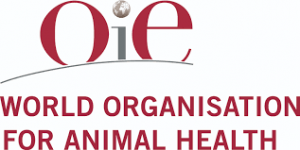 The detection of COVID-19 virus in animals meets the criteria for reporting to the World Organization for Animal Health (OIE), through the OIE’s new World Animal Health Information System (WAHIS), in accordance with the OIE Terrestrial Animal Health Code – as an emerging disease.
The detection of COVID-19 virus in animals meets the criteria for reporting to the World Organization for Animal Health (OIE), through the OIE’s new World Animal Health Information System (WAHIS), in accordance with the OIE Terrestrial Animal Health Code – as an emerging disease.
Therefore, any detection of the COVID-19 virus in an animal (including information about the species, diagnostic tests, and relevant epidemiological information) should be reported to the OIE as well as the Member States CITES Scientific and Management Authorities.
At Loro Parque (or any other facility), a freezer full of fish is no guarantee that there will be a healthy, qualified, capable staff of humans to feed and care for the animals – if this pandemic persists; not just for days or weeks but for months to come. The difficult times humans are now facing as this crisis develops, and the impacts that is having on captive animals, emphasises once again why cetaceans shouldn’t be kept in captivity.
We call on Loro Parque to maintain a 24/7 veterinary presence at the park so as to be able to effectively monitor and rapidly respond to any animals in distress. We would expect them to post regular, transparent and honest updates about their animals, including the orca; and to promptly report any detection of COVID-19 in its animal collections to the appropriate Spanish, EU and International/World authorities.
~~~~~~~~
Ruling In English, Available
The Court has issued a ruling on Morgan (26 April 2018) and we had that translated. It is posted on the page Ruling, 26 April 2018 – and we recommend that you read the linked page about why we applied to have Morgan’s permit annulled to understand the framework of the Ruling.
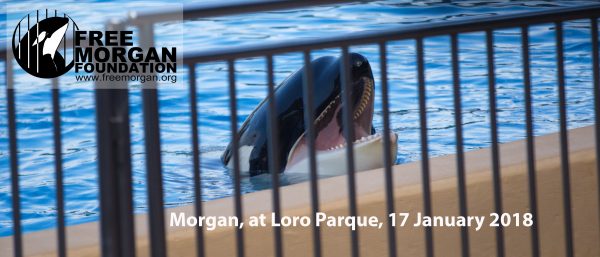
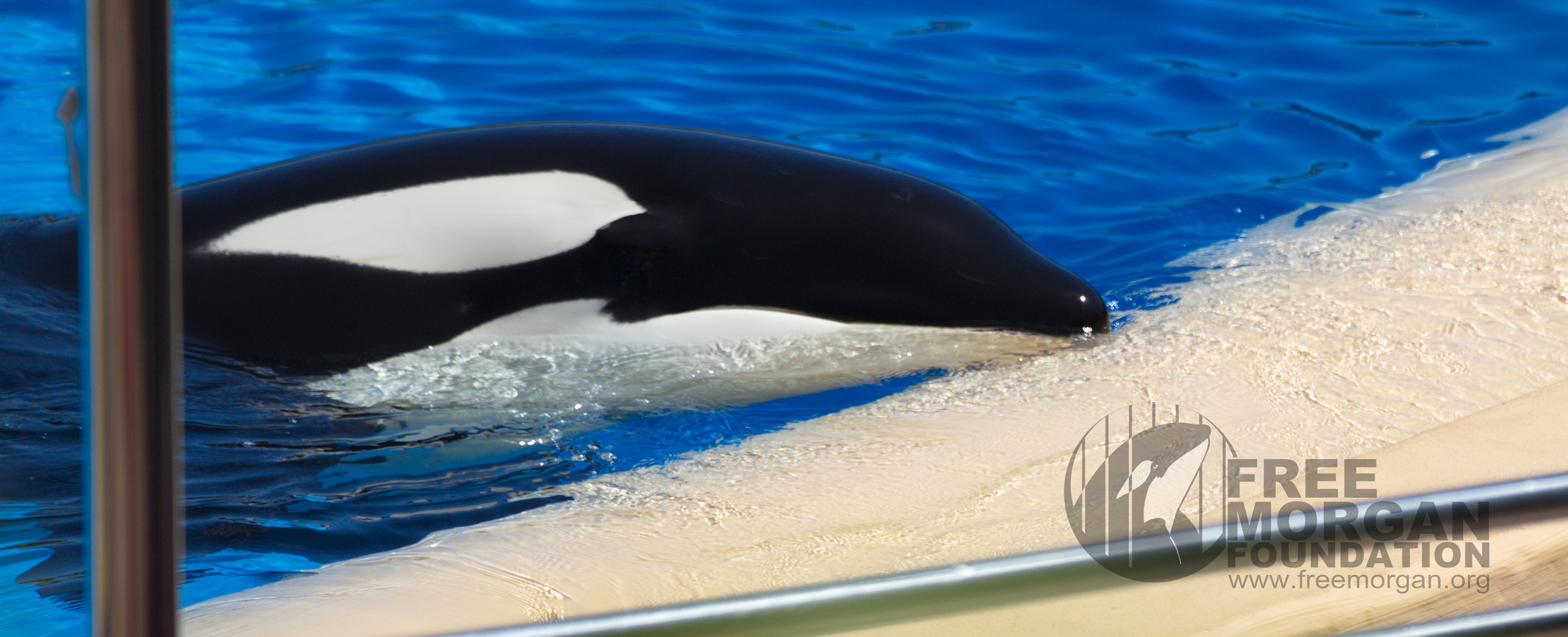 PRESS RELEASE: 4 December 2017: (UPDATED 05 Dec 2017)
PRESS RELEASE: 4 December 2017: (UPDATED 05 Dec 2017)
Orca Morgan Pregnant. Loro Parque in Violation!
[since this press release, Loro Parque confirmed Morgan’s pregnancy on 05 Dec 2017]
The controversy surrounding the wild orca Morgan continues. It has been announced that she is pregnant. Morgan was rescued in 2010 in the Wadden Sea and sent by Dolfinarium Harderwijk (The Netherlands) to theme park Loro Parque (Tenerife, Spain).
This new development in Morgan’s case was revealed in the the Spanish online newspaper El Dia.es on 3 December 2017. [confirmed by Loro Parque on 5 Dec]
The Dutch Ministry of Economic Affairs granted permission in 2011 for the transfer of orca Morgan to Spain on the strict condition that she be kept for research.
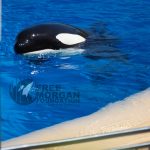 Morgan is a protected wild orca under European Union (EU) law and the CITES Convention. Under these rules there is a legal prohibition to use her for breeding purposes. However, Dr. Jorge Soares, head of veterinary service Loro Parque confirmed the alleged pregnancy in the Spanish online newspaper ‘ElDia’. These rules have been trampled on.
Morgan is a protected wild orca under European Union (EU) law and the CITES Convention. Under these rules there is a legal prohibition to use her for breeding purposes. However, Dr. Jorge Soares, head of veterinary service Loro Parque confirmed the alleged pregnancy in the Spanish online newspaper ‘ElDia’. These rules have been trampled on.
Hester Bartels (Vice Chair) of the Free Morgan Foundation (FMF) stated:”For us this news does not come as a surprise, Loro Parque has been busy for years trying to get Morgan pregnant. They have done this despite the ban on breeding and her young age which can be dangerous to both mother and calf. “
The news about Morgan’s pregnancy comes only weeks before the 23 January 2018 court hearing for Morgan, in which the decision by the Secretary of State not to intervene regarding Morgan’s situation at Loro Parque is appealed.
Advocate Bondine Kloostra of the FMF: “One of the reasons for the appeal is the fact that Loro Parque exposes Morgan, a wild orca to captive-born male orcas, when breeding her is forbidden.”
Dr Ingrid Visser, Chair and Scientific Advisor of the FMF stated “If Morgan were to give birth to such a hybrid calf, it would not contribute to the conservation of the wild orca population. A calf with a new bloodline, on the other hand, would generate a lot of financial profit for Loro Parque.”
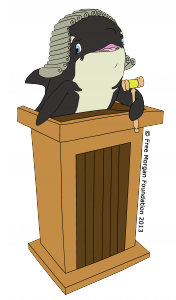
23rd Jan 2018 – NEW COURT HEARING FOR MORGAN
The hearing on the 23rd of Jan 2018 will provide the Dutch Court with its first opportunity to consider and decide fundamental issues of both law and fact which were not addressed by the Raad van State in its decision of 23 April 2014. Since that ruling, new evidence has emerged concerning Morgan’s welfare at Loro Parque including the failure of the Dutch and Spanish CITES Management Authorities to abide by the terms of Morgan’s exemption certificate and take affirmative measures to ensure that Morgan is not subjected to breeding.
The administrative process we initiated in August 2016 to address these new concerns was a necessary procedural first step to bringing the matter before the District Court. We anticipated that the Dutch CITES authorities would not exercise their due diligence regarding the points that we raised administratively and the decision it rendered on 12 June 2017 confirmed the expected result, with the Dutch Management Authority failing to address the issues. This allowed us to officially file formal legal grounds for our concerns about Morgan with the Central Court of Appeal of the Netherlands.
We have been notified by the Court that the hearing will be at Rechtbank Midden-Nederland, Vrouwe Justitiaplein 1, NL-3511 EX Utrecht, The Netherlands. The Appeal will be heard before a panel of three judges, indicating the Courts recognition of the serious nature and complexity of the issues at stake.
The Court hearing will be open to the public and starts at 11 am. We encourage all those who have concerns about keeping cetaceans in captivity to attend. The proceedings will be in Dutch. However, as for Morgan’s previous court hearings, we will have a ‘whisper’ (simultaneous) translator but headsets must be pre-ordered (there will be a fee to cover the cost). We urge those who think they may attend and wish to use this service, to place their order as soon as possible to ensure there are enough headsets available. Contact us through info@freemorgan.org to arrange this.
We have an ‘Attend Court’ ‘event’ page with more details posted as they become available. Additionally, there is a facebook ‘group’ ‘SupportOrcaMorganInCourt‘ and naturally, there is the official Free Morgan Foundation facebook page. Also, we have a Free_Morgan twitter account you may wish to follow.
BACKGROUND
In 2010 a young female orca was spotted swimming alone
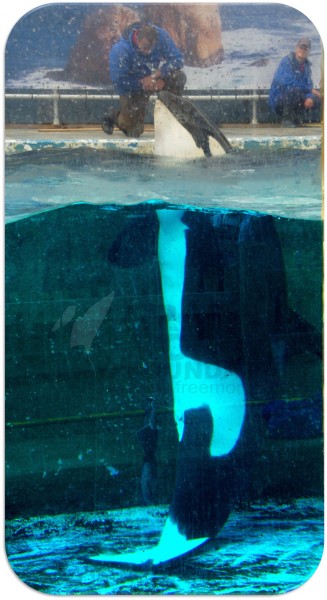
in the waters of the Netherlands, was captured by theme park Dolfinarium Harderwijk, under a ‘rescue, rehabilitation and release’ permit.
Unfortunately, the theme park never fulfilled the ‘rehabilitation and release’ part of the permit.
Rather, the young orca, whom they called Morgan, was trained institutionalized behaviours, as well as undignified tricks. They kept her in a tank that was barely large enough for her to exhibit normal body postures, for 18 months.
This was the start of a saga that continues today.
Despite belonging to a species which is protected by EU law and prohibited to be used for ‘primarily commercial purposes’, Morgan was put on public display only weeks after her rescue.

Importantly, this website provides the evidence we have collected and, as such, is a historic record of Morgan’s story. It allows members of the public, to understand for themselves, how justice failed her. It shows that greed, not Morgan’s welfare, were the driving forces behind what has happened and how she is still treated, often kept locked in a tank even smaller than the one she was in whilst held captive in the Netherlands.
This chronicle, perhaps the best documented case of ‘whale laundering’ ever exposed, is complicated and intricate. But that is partly how the industry has managed to get this far.
Morgan’s nightmare is far from over. It continues to develop and we will continue to fight for her. We have documented horrific attacks by the other orca on Morgan and her self-mutilation wounds.

If you find that we haven’t posted something recent on this website, please don’t be discouraged. We have been advised by insiders that the captivity industry monitors this website and Morgan’s facebook page and twitter account. Therefore we often don’t post time-sensitive documents and findings. This time-lag allows us to follow certain leads, gather further necessary evidence and then present robust data to you, those who truly care.
